
|
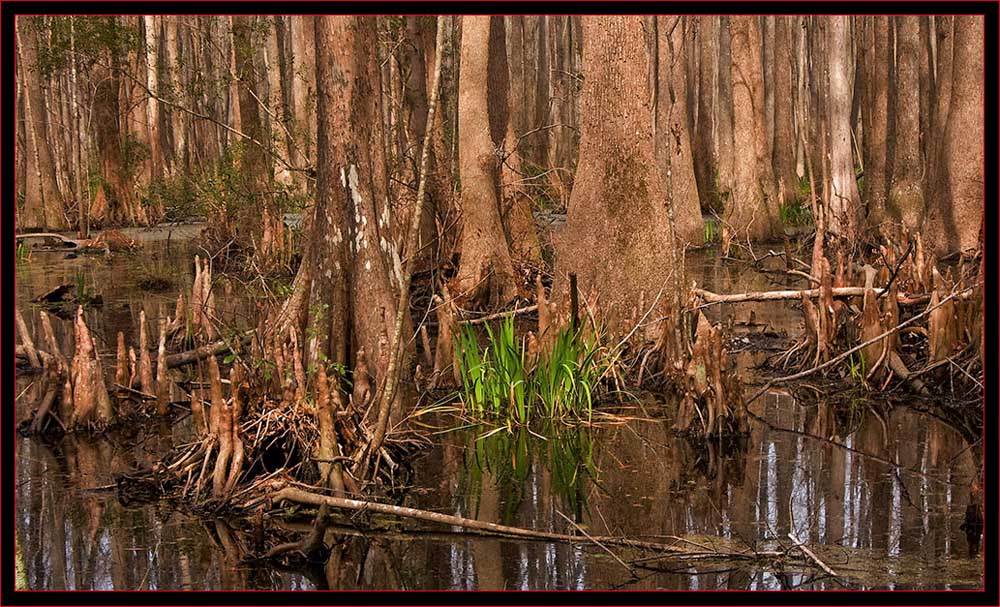
|
Some Background Information
Having spent much time in the area, we knew where we wished to stay and set up a short term lease on an apartment in Pooler, Georgia near the Savannah/Hilton Head Airport. This required a commute into Savannah on a daily basis, sometimes in morning or afternoon work traffic but had the advantage of keeping us out of the city when not rerquired to be at the site.
One aspect of this location I appreciated was the proximity to the The Savannah National Wildlife Refuge (SNWR or the refuge hereafter) and the Laurel Hill Wildlife Drive. This photojournal consists of images I took in the refuge and along the wildlife drive in the many times I visited the area. Some of these trips were brief, more or less a quick drive through on the way to the apartment from Savannah. Others were planned to spend as much time as I required exploring the area seeking out photographic opportunities. The crew on site worked seven days a week; my schedule didn’t require I be on site all the time, especially on weekends when no additional crews were present. Looking at my image files, grouped by date, I was in the refuge nineteen times over the course of nearly five weeks and took many images… Of these, I enhanced perhaps six hundred photographs, a sampling of which can be viewed in this account. I always travel with an external hard drive, in this case a 500GB USB2 device and all the Raw files from the camera cards as well as the enhanced group were stored & in some cases backed up, between this drive and my laptop. My temporary roommates were convinced I was not a well individual and/or had some type of computer addiction as every night I was either doing work related tasks or evaluating images on my laptop. This was about the story of my time in Georgia this trip - work, image, sleep and eat...
|
I’ve written about the Refuge previously and images from this area can be found in several of my photojournals. To make this account stand alone however, I’ll use some excerpted text from the official website to provide this information:
‘Savannah NWR, which lies on both the South Carolina and Georgia sides of the Savannah River just upriver from the city of Savannah, Georgia, was established April 6, 1927. The refuge's 28,168 acres include bottomland hardwoods and tidal freshwater marsh. A 3,000 acre fringe area of upland hardwoods exists along the eastern boundary. An additional 3,000 acres forming an impoundment system are managed for migratory wading birds and waterfowl. These freshwater impoundments were formerly the rice fields of plantations dating back to the mid or late 1700's. Many of the dikes enclosing these pools were originally built during the rice culture era. The refuge is home to a large variety of wildlife including: ducks, geese, wading birds, shorebirds and several endangered and/or threatened species including bald eagles, wood storks, manatees and shortnose sturgeon. The refuge also provides nesting areas for wood ducks, great horned owls, bald eagles, osprey and swallow-tailed kites among others. Motorists are welcome on the Laurel Hill Wildlife Drive, off of S.C. 170, which meanders along four miles of earthen dikes through the managed freshwater pools and hardwood hammocks. During the spring and fall, you will usually see many alligators sunning themselves on the banks of waterways, along with an assortment of wading birds. During the winter months, waterfowl and other migratory birds are visible in the impoundment system.’ |

|

|
The plan view map at left indicates a good bit of the Refuge although the northern portion isn't indicated. This graphic was large enough already that I didn’t wish to increase the size but did want it on a scale where one could read the text.
This version was scanned from the hunting and fishing regulations brochure for 2007~2008. This brochure also serves as a hunting permit when signed and in your possession, which is pretty crafty as it includes all the regulations for whatever
one may be hunting – guess you can’t say you didn’t know…
Please note that I’ve highlighted the Laurel Hill Wildlife Drive in yellow and added text and markers to point it out in the lower right center. This drive is nearly five miles in length and I’ve become quite familiar with it. One aspect of this area I’ve learned to appreciate is that each season I’ve visited offers new birds & other animals and sights to enjoy. Many ducks winter here and there were many more present since the October 2007 visits I made. I did find the variety was somewhat fixed in the January-February drive throughs however and many remained far out in the marsh where they were difficult to observe and even even more arduous to photograph. I’ve found the wildlife drive to be neat place to get on and observe whatever may be going on. I’ve had days where I didn’t see anyone on the one-way road and viewed other days where the place had so many people driving around it was problematic for any imaging attempts. I learned where many ‘hot spots’ were so had a good idea where I wanted to be at any given time so generally could work around these issues. You can park and explore in many spots, one could hike forever in this place if that's what you like, but there are places in the roadway that you cannot park without blocking vehicles behind you. Most people are doing the same thing you’re doing and if you stop they most likely will as well to see what you’re checking out. The wildlife drive is a miniscule portion of the overall facility but I believe provides a unique cross section of the area that can be investigated without even exiting your vehicle should you choose not to. I met some really nice people in the refuge and learned that it really does have a diverse group of folks that meander through the area. Some, probably most, are driving through with families or children hoping to catch a glimpse of an alligator. Then you have dedicated nature observers – many birders and people with cameras in a plethora of designs from long lenses similar to mine to the fixed lens point and shoot variety. Many of the images in this journal were shot handheld with my Canon EOS 40d and EF 400mm f/5.8L lens. This is because the birds in the refuge are surprisingly quite skittish and if you see something fairly close to the road you really have an interest in photographing – it could a perched hawk or duck close by – as soon as you open your door the subject is gone before you even recognize what’s happening… This was invariably the case when I attempted to pull my tripod and 500mm lens out of the bed of the truck when I spotted something of interest. Once the subject realizes that he (or she) may be the subject of interest – the reason for your stopping - that will represent the end of the opportunity… That being said, I generally tried all the same. If possible I’d shoot a few insurance exposures with the handheld system and then attempt to get the long glass out as a follow up. And you can trust that I can pull, set and shoot from my tripod in an instant if given the opportunity and a worthy subject – I’ve had a great deal of practice. I believe the most auspicious way to photograph along the wildlife drive is to use your vehicle as a blind and shoot from inside. One could walk the grounds as I have done many times or set up a ‘shoot zone’ hoping a subject will come into your area, but most people remain mobile most of the time and I generally was as well except for getting out at the regular spots where I was aware of what could be found in that particular area. I had all kinds of varying weather and many times the lighting conditions simply would not support shooting from inside the vehicle. I never really had the luxury of picking my time of day or waiting for the best weather. I’d go through the refuge in overcast, cold, warm conditions or rain. So without further ado, we will commence this photographic tour representing my winter trips through the Savannah National Wildlife Refuge… |
|
My arrival in Georgia found the weather unseasonable cold. Not cold compared to Maine standards for January of course & no snow on the ground but colder than expected. The mornings especially
were chilly and on several I had to de-ice my windshield before heading out…
My trips through the refuge this visit commenced on Friday, January 18th. With the chill in the air there were few people around during that first week or so and I was pleased to re-visit some familiar
areas to learn what may be about.
The Ring-necked Ducks I’d viewed in October were still present in sizable flocks. Some of these foraged closer to the roadways than in the fall, which I took as a sign there were greater numbers present.
Ring-necked Duck imaged with the Canon EOS 40D handheld 1/1000 second, ISO 800, 400mm at f5.6.
|

|

|
You just never know what you may find in the refuge. I noticed this feather caught on a stem and stopped to take a photograph. Although not too impressive at this scale, the master file is nice. |
|
I viewed quite a few White Ibis in the early trips through SNWR, fewer later after the weather warmed up. This example was in a typical pose but one I find compelling so I stopped and took a couple of frames.
This image was taken handheld in fairly poor light. I had to shoot at 800 ISO at times to get my shutter speed up and often times this wasn't enough - remember the handheld rule is 1/focal length of the lens,
so I needed to have a speed of 1/400th second or above to be successful with my Canon EOS 40d/400mm f/5.6L lens, but don't like to go above 400 ISO. 800 will work on occasion but above that my experience indicates the shot
probably won't be usable.
White Ibis imaged with the Canon EOS 40D, 1/500 second, ISO 800, 400mm at f5.6.
|
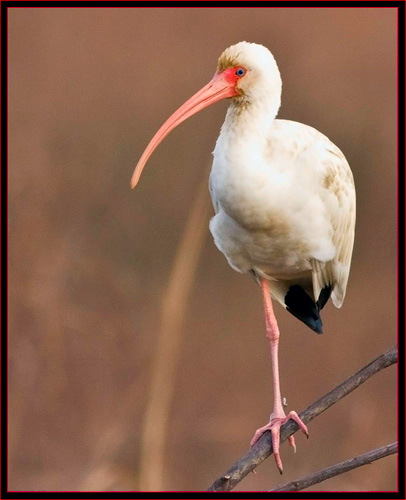
|

|

|
One species of duck that was well represented at this time of year was the Northern Shoveler. There were many of these at various spots along the wildlife drive and unlike others didn’t appear too concerned with vehicle
traffic as long as you didn’t approach too closely. They appeared to have little tolerance for people on foot and had a wide comfort zone. I found this a bit surprising as SNWR gets a good deal of traffic along the wildlife drive at times.
I’d photographed these birds before in Virginia but this was my first opportunity to view so many of these male dabbling ducks. |
|
By far the most prevalent raptors to be found in SNWR this time of year are Red-tailed Hawks from my experience. There were many examples of these around but not nearly as many others I'd viewed in the fall. This bird was in a typical
pose and one I saw often. Like other birds in the area if they believed you were expressing an interest in them they took flight quickly.
Red-tailed Hawk imaged with the Canon EOS 5D tripod mounted, 1/640 second, ISO 800, 400mm at f/5.6.
|
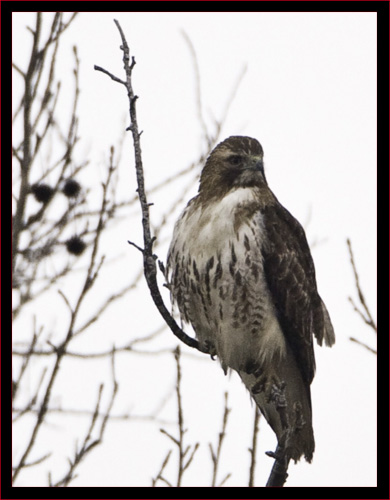
|
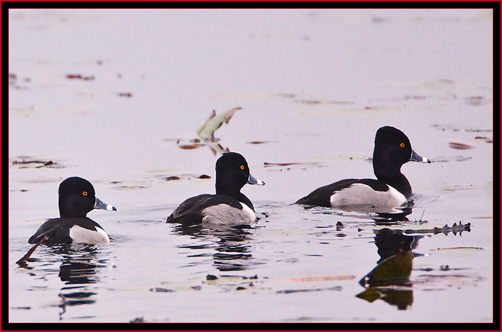
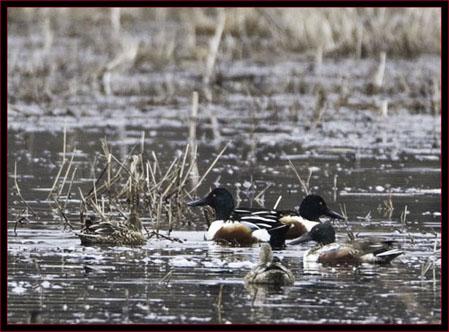
|


|

|
I remembered from last fall how I’d hoped to obtain some American Coot close up shots. These birds were coming into the refuge then but now there were many. This is one species that can be imaged close to the road as they don’t appear to mind an approach provided it’s not blatantly threatening. Coots could be found foraging closer to the water’s edge & many could be viewed flocked far out into the distant marsh. |
|
I was near the entrance to the wildlife drive on a frosty Sunday morning checking out an area off the road. I often stopped by this spot as there is a rutted road that runs next to the
woods and travels into another section of the swampy marsh. There was a Northern Harrier that hunted this area and try as I would, I could not sneak up on this bird to get a closer
shot when the bird was perched. At times I’d see the harrier from the road and knew the bird was there but after a multiple unsuccessful attempts to make an unseen approach I abandoned
the effort.
Today as I was checking out the grounds I noticed a bird in the distance flying towards my location. I could tell by the flight pattern and steady stroke of the wings it wasn’t a vulture and probably wasn’t a hawk. As it came closer I raised my 400mm lens and waited until the distance closed to learn how close the bird would fly to my location. I’m glad I took this opportunity as the bird turned out to be a young Bald Eagle I obtained several decent images of the flyby. These eagles are four or five years of age before they develop the distinctive white head and tail feathers that aptly identifies the adult birds. I was pleased to know eagles were still in the area having viewed one or two previously. Bald Eagle imaged with the Canon EOS 40D handheld, 1/400 second, ISO 400, 400mm at f/7.
|

|

|
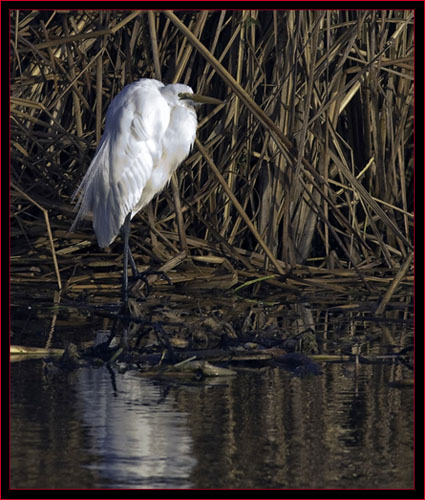
|
Once I’d made the rounds in the turn off I headed to the refuge entrance to enter the Laurel Hill Wildlife Drive. Many wading birds can always be found in this area and today was no
exception. Although I really didn’t need anymore and this specimen wasn’t close, I took this image of a Great Egret as I passed by.
While viewing the marsh by a bend in the road where many stop to observe birds, I met some really nice folks and we talked for a brief time. I pointed out where some Black-crowned Night Herons were located in the marsh and we discussed the area. This was my first meeting with Steve and Pamela Hudson and right away I knew we had much in common. They ride motorcycles – this came up when they viewed a Harley logo on my shirt and I found Pamela has an interest in genealogy. We exchanged cards to remain in contact and I hoped we’d have an opportunity to meet again, which we did make happen at a later time. Pam & Steve were checking out the refuge along with his cousin, Martha Pharmer and her husband Monty. These were some really nice folks. |


|
|
A day or two later I returned to the area where I’d spotted the eagle to see what may be going on. I parked my vehicle and walked out around the trees looking for whatever perching birds
may be around. There was quite a bit of activity today, luck of the draw really and I decided to stay here for a time and set up to get some shots.
Eastern Phoebe in motion imaged with the Canon EOS 40D handheld, 1/500 second, ISO 400, 400mm at f/5.6.
|

|
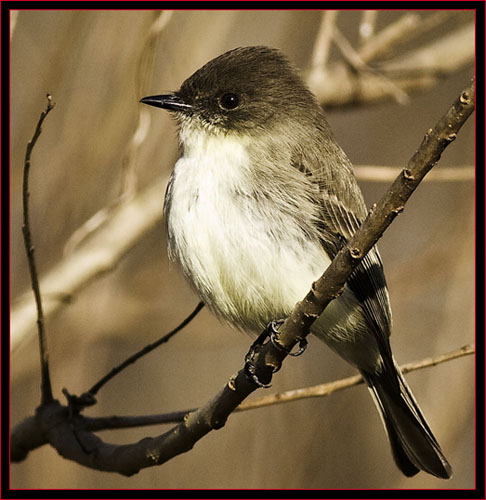

|


|

|
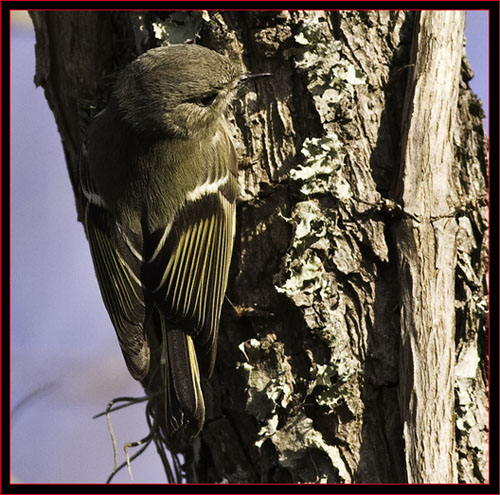

|

|
Another prevalent group of ducks in the refuge included Blue-winged Teals. I was pleased about this as they are indeed beautiful and I
hoped to get some respectable shots to add to my Bird Photography Index as they were new to my listing. In the end result I wasn’t
disappointed but these ducks are in the group that exhibits little tolerance for being approached. Finding some near the roadway where one could get a good image scale was not a simple task.
I think you'll agree from the image below that these birds are quite handsome... |
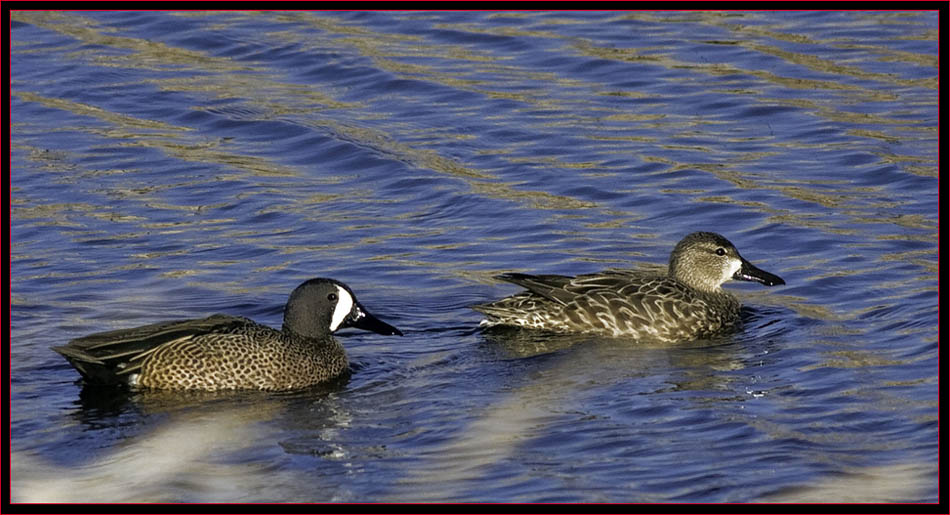
|
|
It wasn’t until the following weekend that I had an opportunity to get out with my cameras. I had things to do but decided I would commence the day by spending some time in and around SNWR.
While driving along SC 170 it was common to see Belted Kingfishers perched along the power lines watching the water for their next meal. In the fall I’d obtained some good images of these birds in the refuge but this trip I didn’t see many along the wildlife drive. I decided the next time I saw one I would get an exposure or two sitting on the wire or not… I took the shot at right from my truck. With no traffic behind me I stopped in the middle of the road, leaned over and clicked the shutter. By the way, all the kingfishers I viewed had the same bedraggled look – must be that time of year for them as they certainly weren’t displaying their usual tidy appearance. Belted Kingfisher imaged with the Canon EOS 40D handheld, 1/2000 second, ISO 800, 400mm at f/6.3.
|

|
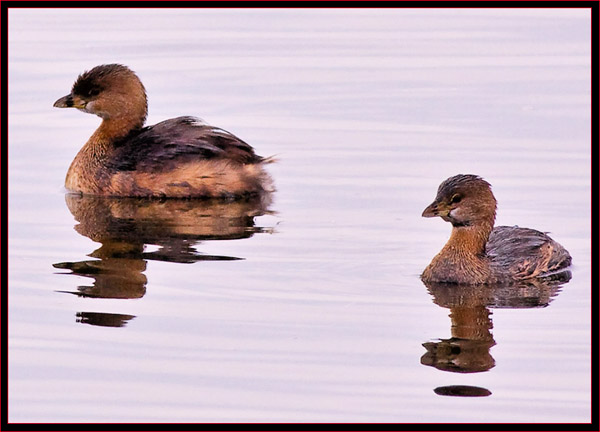
|
I viewed more Pied-billed Grebes in the refuge than I’d ever recalled seeing before. These small birds aren’t uncommon but were well represented throughout the area. I remember my first attempts to photograph these elusive rascals in Virginia. They can dive and stay underwater a lengthy time. Their primary defense appears to be a quick dive and a swim away from the perceived danger. If you’re an imager waiting for one to reappear – well – good luck with that… |
|
This pair of Red-tailed Hawks became one of my favorite sights and I spotted them often heading towards the entrance to the wildlife drive. They frolicked about not far from the road and could usually be
spotted near several piles of brush that someone had gathered perhaps in preparation to burn. I spotted the pair regularly over several weeks but as the time neared for me to leave the area I didn't see them together.
Pair of Red-tailed Hawks imaged with the Canon EOS 5D tripod mounted, 1/400 second, ISO 400, 700mm at f/8.
|
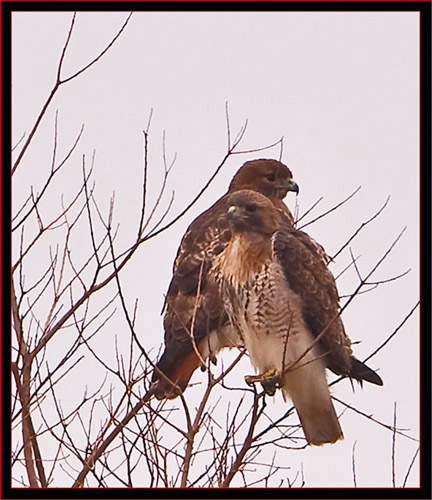
|


|

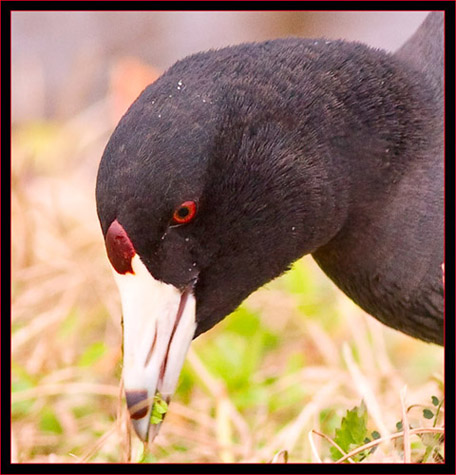
|
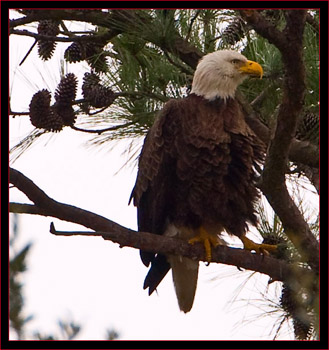
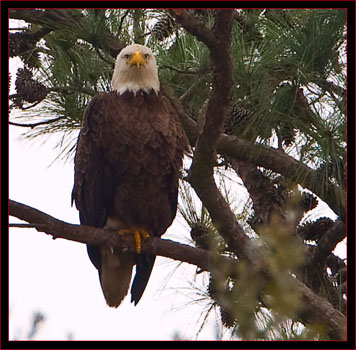
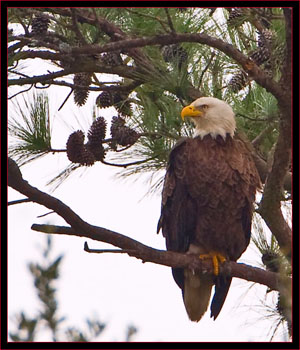
|
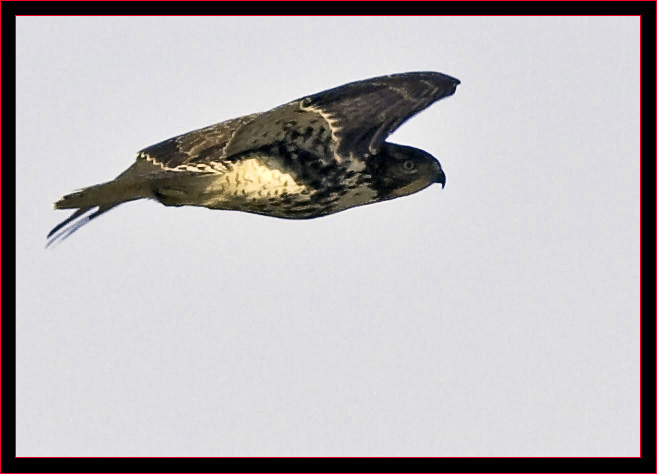
|
The next day was Sunday which allowed as much time as I wished to spend doing whatever I chose. So I prepared my cameras after having recharged the batteries, cleaned and checked both,
formatted the media cards and headed to the refuge to see
what may be going on. It was a nice day with blue sky and the weather had warmed up considerably compared to when I first arrived.
Weekends can get busy around the wildlife drive if the weather’s nice and today appeared to be one of the busiest. I talked to people at the various stops and mentioned where I knew different birds and animals could be found from time to time. Gators are probably the largest draw and many asked if I’d seen any. Actually I hadn’t so far this trip; the weather had been too chilly for them to be out trying to catch some rays. |
|
I believe everyone be it man or beast was pleased to have the temperature up a bit and with the additional time I could spend had a prolific day out with the cameras.
There was a lot of hawk activity and I always take time to image these birds if provided an opportunity. Photographing birds in flight is nearly a waste of time without a blue sky so today was
a fine opportunity plus the time of day helped to keep the shutter speed up.
I’d remained in touch with Steve and Pamela Hudson since we first talked. Steve called to let me know they planned to visit the refuge with some friends, Axel & Janice Carlson, and we made an arrangement to meet. Today, although we traveled in separate vehicles along the wildlife drive, I had some company. After a great time birding and seeing the sights, we went into Port Wentworth and had a late lunch together. I truly enjoyed the conversation and company... Perched Red-tailed Hawk imaged with the Canon EOS 40D handheld, 1/800 second, ISO 400, 400mm at f/8.
|

|

|
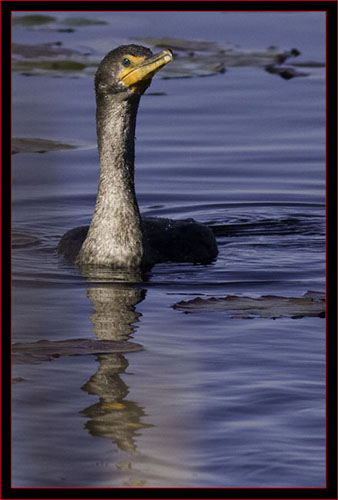

|

|
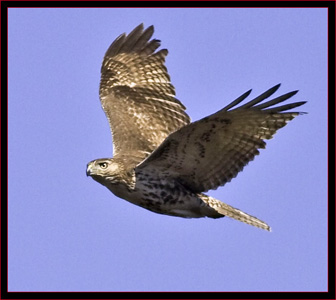
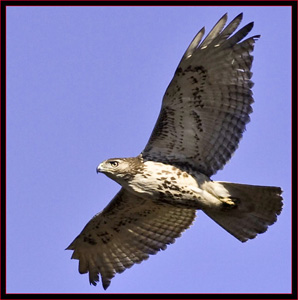

|

|
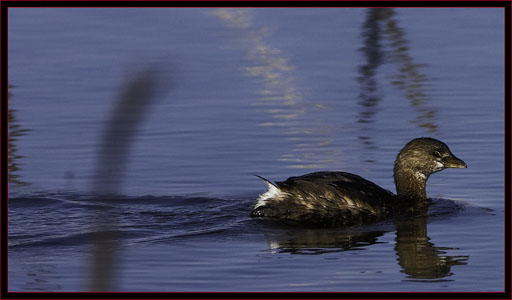
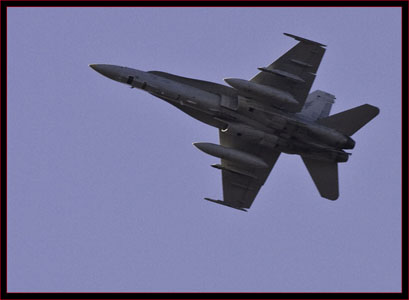
|

|
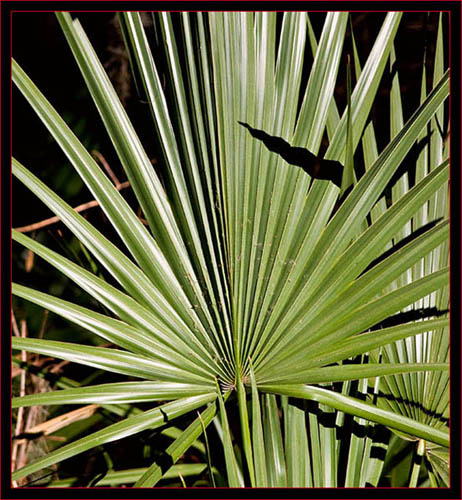

|
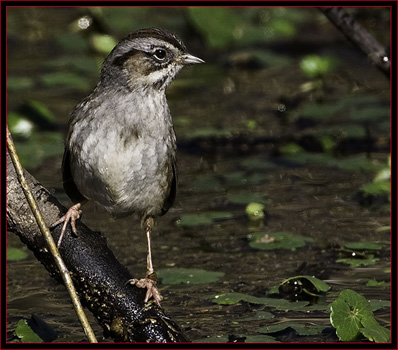
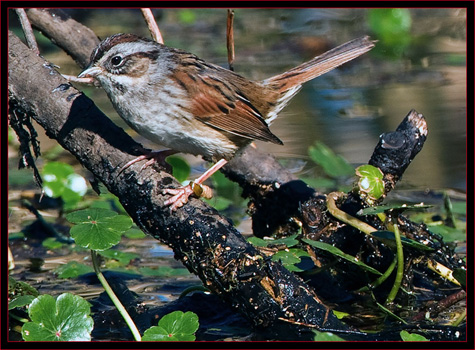
|
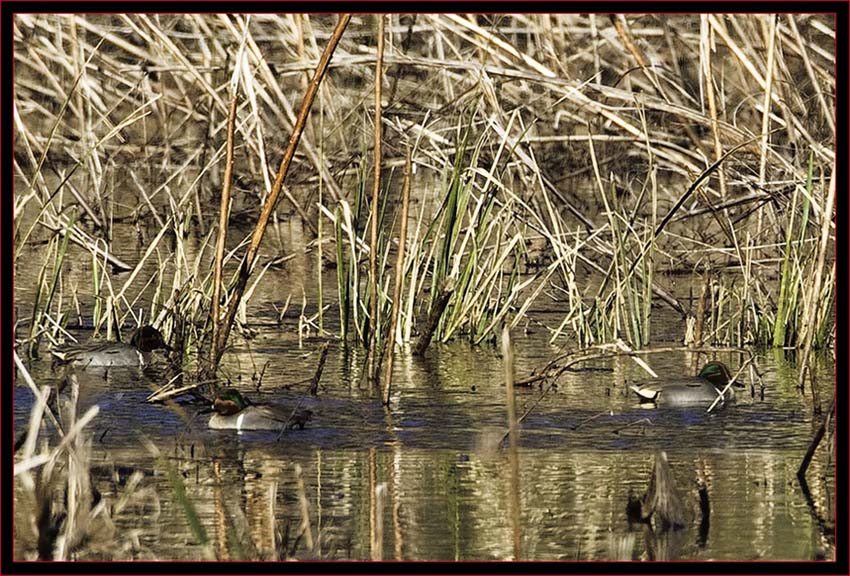
|
The Gators Come out!
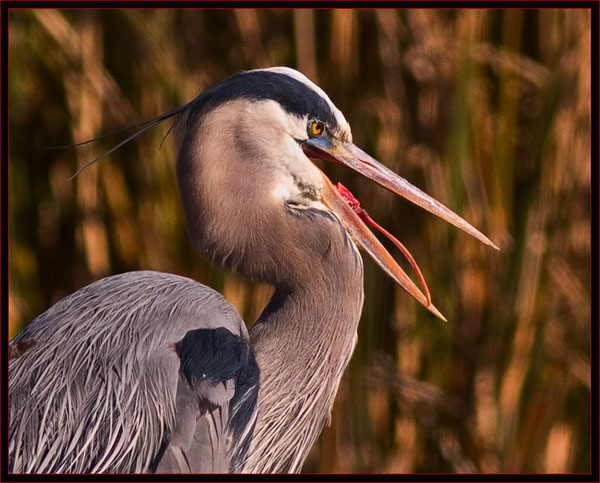
|
As the weather turned warm again it was just like springtime in New England. I thought about this as all the reports from home were of snow and more snow. This was one of the
greatest snowfall winters Maine had experienced in several years and everybody I talked with indicated they were fairly tired of moving, driving and living in it.
It was cold as well of course and with heating oil costs at an all time high this was a point of discussion everywhere.
Have you ever seen a Great Blue Heron tongue? Well now’s your opportunity... |
|
I believe the warming trend had an impact on wintering birds in the refuge as the ducks and other populations looked like they began to thin out a bit. There was still ample
activity but I could discern the difference. I found time to drive through the refuge nearly everyday for the following week or so and will post a sampling of images from these various trips.
Perched Red-tailed Hawk; you can see how nice this day was by the background. Imaged with the Canon EOS 40D handheld, 1/800 second, ISO 400, 400mm at f/8.
|

|
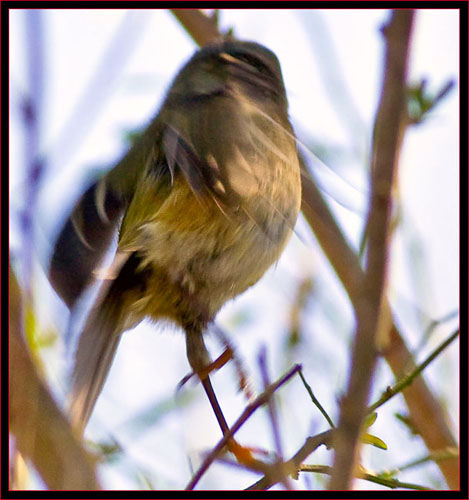
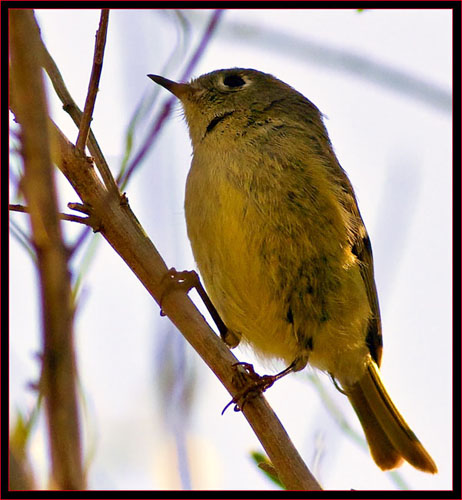
|
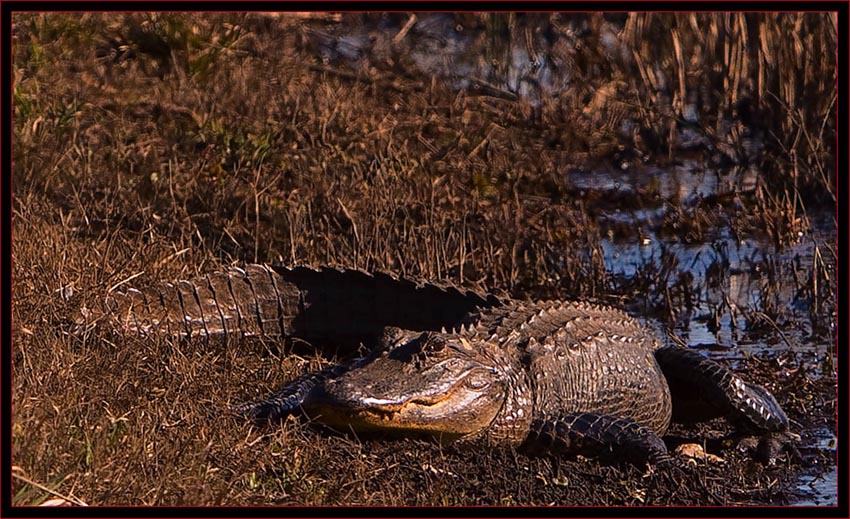
|
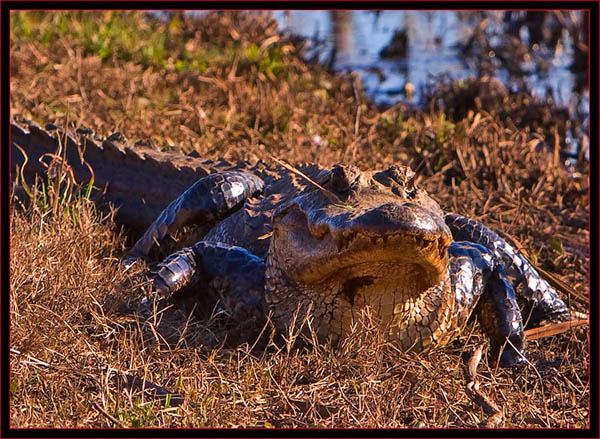
|
There were numerous alligators to be seen in various parts off the wildlife drive. Like most of us, they seem to be creatures of habit and could often be found sunning in the same location over several days. I found this time of year to be advantageous over the heat of summer because they were more likely to be out of the water. First of all I would comment that photographing gators isn’t particularly exciting for the most part. You know they do more than lay about but unless you’re extremely fortunate & happen by at the right time or wish to take the time to spend hours observing one in the daily routine of life, chances are the subject won’t do much that presents an exciting photographic opportunity. In the summer most of my shots were of the exposed head out of the water as they tried to cool off. At least now I could get some full length shots. |

|
| Over the course of weeks I had left in the area I took a series of shots on the refuge alligators. Some were with my handheld system but I also had opportunities to obtain some close up images utilizing my tripod system. This worked out well during slow traffic times along the wildlife drive when I had time to set up and experiment with varied exposure settings. More than once however a vehicle would drive by faster than it should or have kids in the car that have a tendency to hoot and holler because they can I suppose. Everybody enjoys the refuge in their own way although I don’t think anyone would see much making so much noise. Once I did speak to some young people in a car who spooked a gator I was photographing. I was polite of course and probably wasted my time, but stated that if their purpose was to view animals that resided in the refuge they were certainly going about it in the wrong way. Being quiet and respectful while in their environment would be far more helpful. |

|
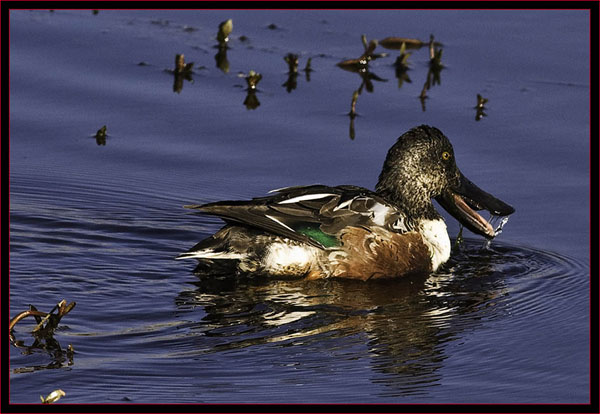
|
I guess today was a good day for observing tongue shots on birds. At left is a Northern Shoveler view; I was amazed to see that his tongue is as long as his bill... |
|
I was pleased to see several examples of our smallest falcon, the American Kestrel in the refuge. In the fall there were many of these around and they could be viewed in the same general area as they hunted.
I saw few in the refuge this time around and not a single Merlin, a less common falcon and far fewer Northern Harriers.
American Kestrel imaged with the Canon EOS 5D tripod mounted, 1/800 second, ISO 400, 700mm at f/8.
|
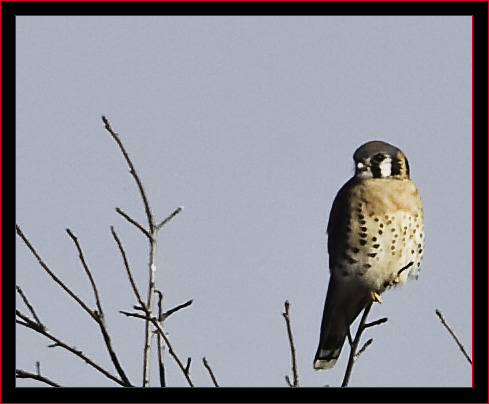
|
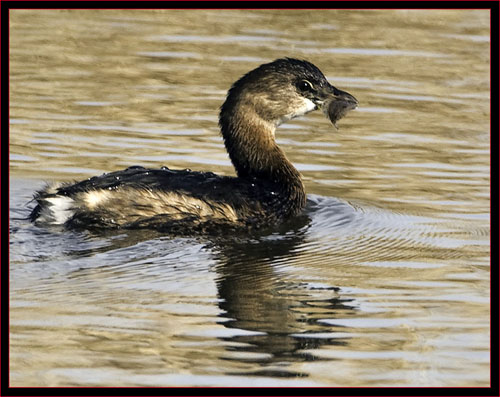
|
The next afternoon I drove towards the refuge wildlife drive after leaving the project in Savannah on the way home. I continuously checked multiple areas whenever I traveled through – one where the harrier hung out by the small highway turn-off; another was off the wildlife drive where I was seeking out Green-winged Teals hoping they’d get closer to the road among others. |
|
As I drove by I viewed the harrier ahead hanging out by a brush pile. I knew from experience if I stopped the vehicle and exited the bird would fly off automatically. I made as stealthy an approach as I could
driving along the shoulder of the road, opening the passengers window as I went. As I got near the harrier I leaned over to get a view through the window and took the image at right as an insurance shot.
I knew I’d never be able to get my tripod out but hoped I could get out of the truck and have an opportunity to obtain a good focus lock. This wasn’t meant to be – as soon as I opened the door the bird
took off… However, I was happy to obtain this image.
Northern Harrier imaged with the Canon EOS 40D handheld, 1/800 second, ISO 400, 400mm at f/8.
|

|
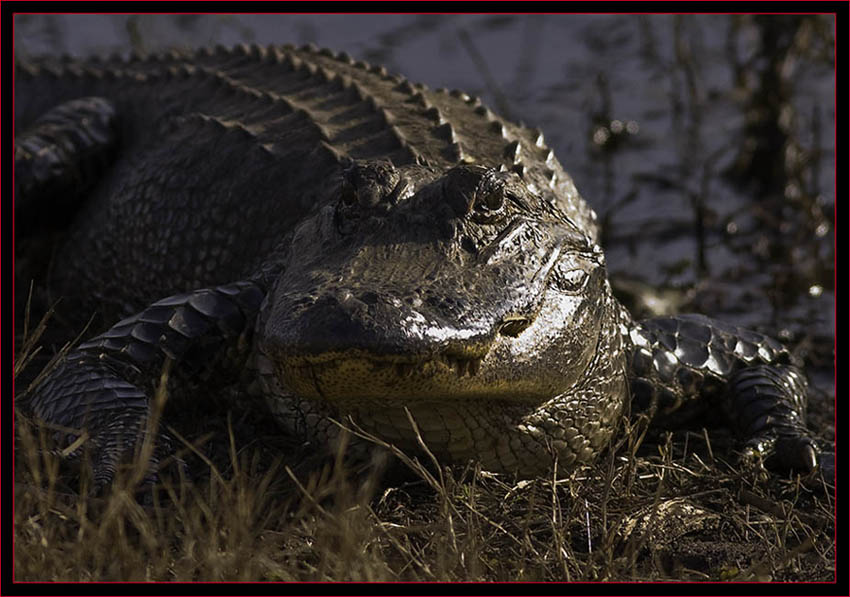
|
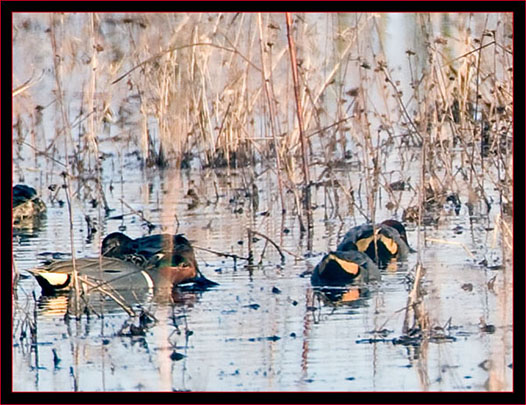
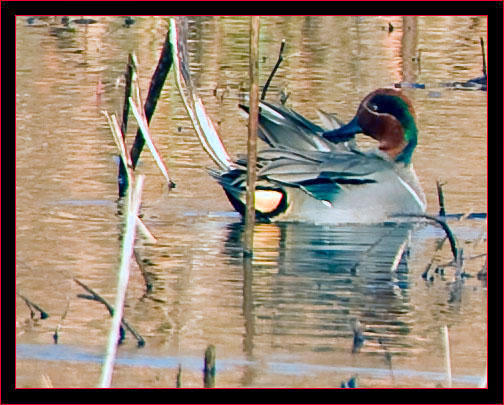
|
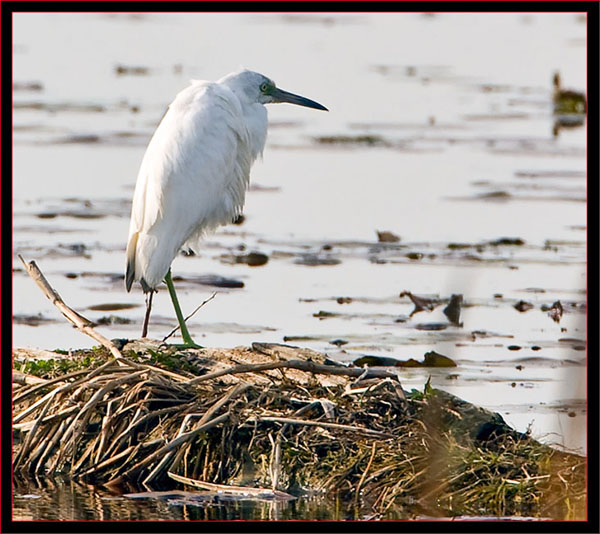
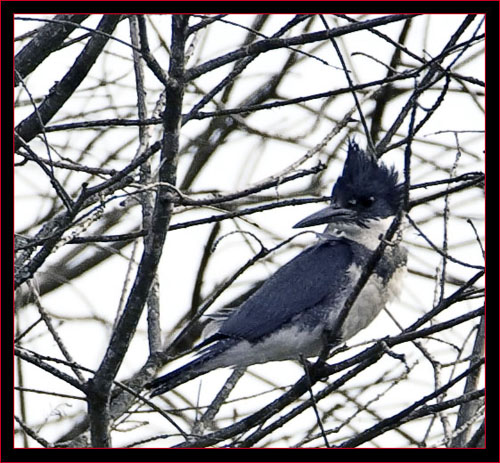
|

|
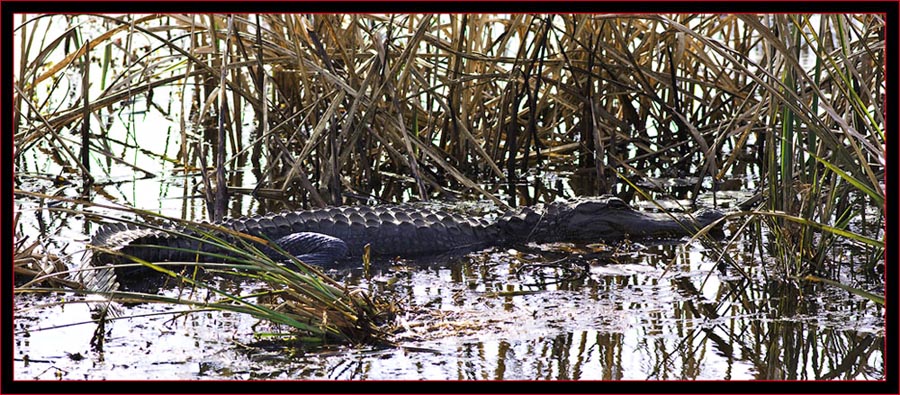
|

|
The next afternoon I repeated the same pattern and after leaving Savannah traveled through the refuge on the way home. It was glorious afternoon and the lighting was excellent to get out with the cameras.
I almost felt sorry for the homefolks in the cold and a bit guilty about being outside on such a day in January…
There was a tree along the wildlife drive when you first get near water that lends itself well to bird photography in the upper branches. With the sunshine and blue sky available this day I parked and watched this tree for a bit anticipating some birds. I was not disappointed & the follow images were taken at this time… Northern Cardinal imaged with the Canon EOS 40D handheld, 1/640 second, ISO 400, 400mm at f/8. |
My friend & fellow photographer Fitz Clarke emailed about the Brown Thrasher sequence posted below. Fitz indicates the thrasher is eating the fruit of the Chinese tallow tree (Triadica sebifera – aka as the ‘Florida Aspen’ or ‘Popcorn Tree’) and mentioned that research is underway pursuant to Georgia birds that partake of this fruit. The list of birds noted is around twenty-seven species to date.
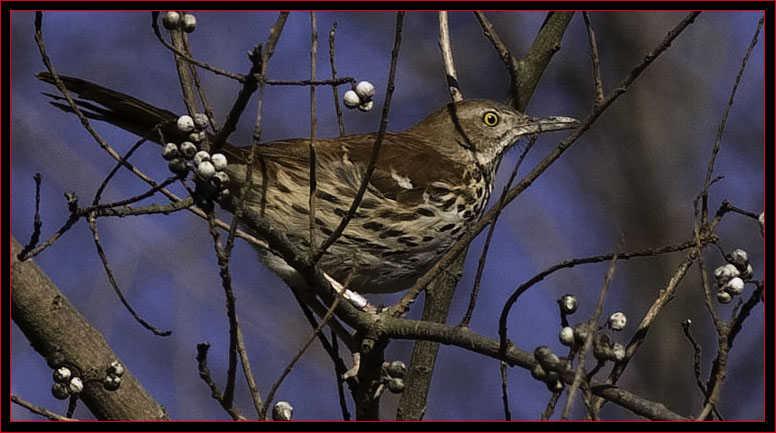
|



|

|

|
|
A bit further down the waterway I came across this gator at right just taking it easy.
After I took several exposures and prepared to get back on the road I noticed something odd not far ahead of me. Two Red-tailed Hawks were perched on a pile of brush next to the water. I’d never viewed these birds near here unless they were flying by overlooking the area. The image below dipicts what I saw as I approached... |
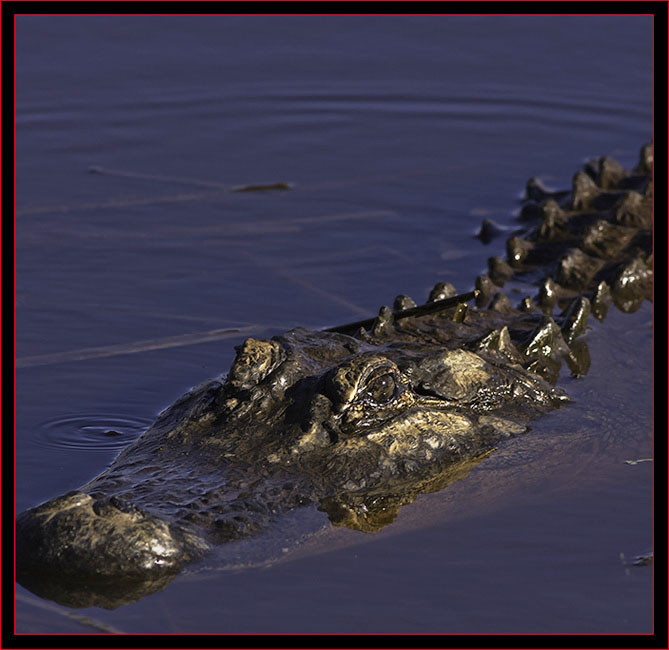
|

|
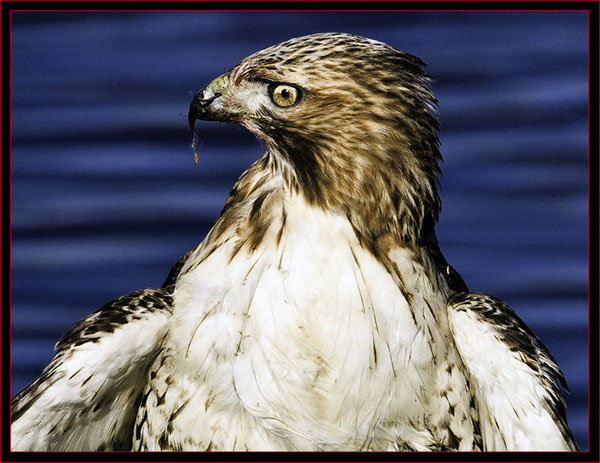
|
The companion hawk flew away instantly upon seeing me but the other, with wings spread did not - a clear sign something was wrong. I could tell this bird was stressed and highly agitated and soon enough I could see why… This poor hawk had a fishing hook with a
section of line through it’s beak that was projecting through the left side. I felt absolutely terrible about this and wasn’t certain if one of the wings were broken or what other damage the bird may have sustained.
I’d never seen a hawk sitting quite like this and there wasn’t anything I could really do. The bird watched my every move as I moved back and forth trying to evaluate the situation. I took the time to thoroughly
photograph the hawk with both cameras but didn’t approach any closer under the circumstances. After a time I left with definite concerns about the welfare of this poor creature.
If you look closely at the image at left you can see the fishhook projecting out this hawk’s beak about two inches in front of the eye. |


|


|


|


|
| I’d been evaluating my images in the evening when I got back to my computer. While reviewing the alligator shots I thought it would be a good idea to get some close up shots that would emphasize the teeth of these creatures. The image at right is one of these. I placed the tripod low to the ground in a small hollow and took a series of shots while on my knees. This photograph is a full frame image with my 5d camera so you can imagine how large the master file would print out. I would call this a definite ‘keeper’ |
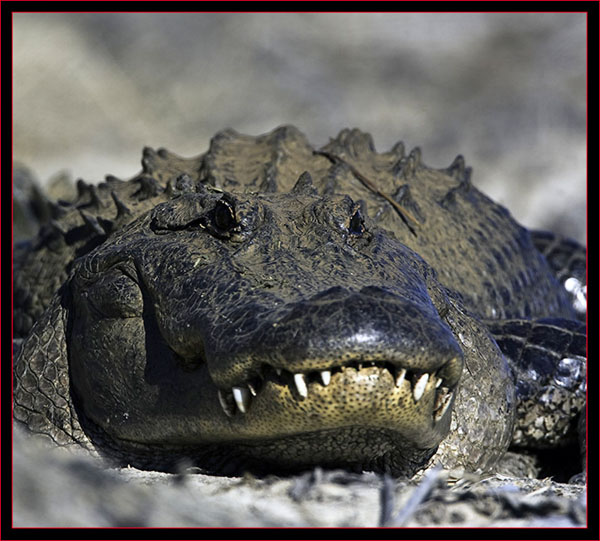
|
Eagle Strike!

|
It was a Friday afternoon in early February and I decided to swing through the refuge. The light was good, pretty much perfect a few hours before sunset but it wouldn’t be long before the best of the day was behind me. After
checking around the highway for a bit I headed for the entrance to the wildlife drive to learn what may be going on. It had been another fine day and the weekend weather forecast indicated more of the same.
As I followed the road to where the water starts not far from the entrance I viewed this Great Blue Heron foraging alongside the bank. I believe this is the same bird I photographed recently dong a tongue display. These Herons are probably the most photographed of any waders in the east and they can be found nearly everywhere I’ve traveled. |

|
| I’d noticed that a large population of American Robins had recently come into the refuge and many of these were around today. I was always interested to learn where the flock may be found in the area on the various days I’d been around. Today they were fairly close to the wildlife drive entrance. |

|

|
I came to a bend in the road where I’d been parking and setting up regularly as this was one of the area hot spots for birds looking into the marsh. I was pleased to find a couple I recognized already there doing the
same as I’d planned watching the area, Steve & Dany Dunbar.
Dany is a photographer and along with spouse Steve, frequently visit the refuge as they live nearby. We’d been talking about camera gear, lenses, etc.,
quite a bit as they’re preparing to upgrade their equipment soon and like many of us, like to gather opinions & comments. It was great to see them out and about and we met pehaps four or five times on my jaunts around the refuge.
As Steve and I were talking facing the water with our backs to his vehicle I turned my head to make a comment and viewed a large bird flying in from behind us. Having just plopped my tripod down I wasn’t exactly ready to take a shot but the camera was powered up and within a matter of seconds I knew an adult Bald Eagle was coming our way. I got off a series of shots as the bird made an approach to the water like it was on a mission. As I followed the eagle with my tripod mounted system I was astonished how quickly & deliberately this strike took place. I was thinking there was no way the eagle could have spotted a fish from the angle of approach, but I was incorrect because in a flash the bird pulled a large catfish out of the water a short distance from where we stood. Unfortunately, I was unable to photograph the actual strike because there were high reeds next to the water in front of us blocking our view. Once the strike was completed, the bird made a beeline flight out just as quickly as the approach, flying to my left and directly into the sun. The eagle flew out of the field of view of my tripod quickly so I raised the 40d and took a series of shots as it exited the area. I’ve got to comment that this was all pretty cool and a great scene to witness. The sequence below consists of some of the images I enhanced from this strike… |
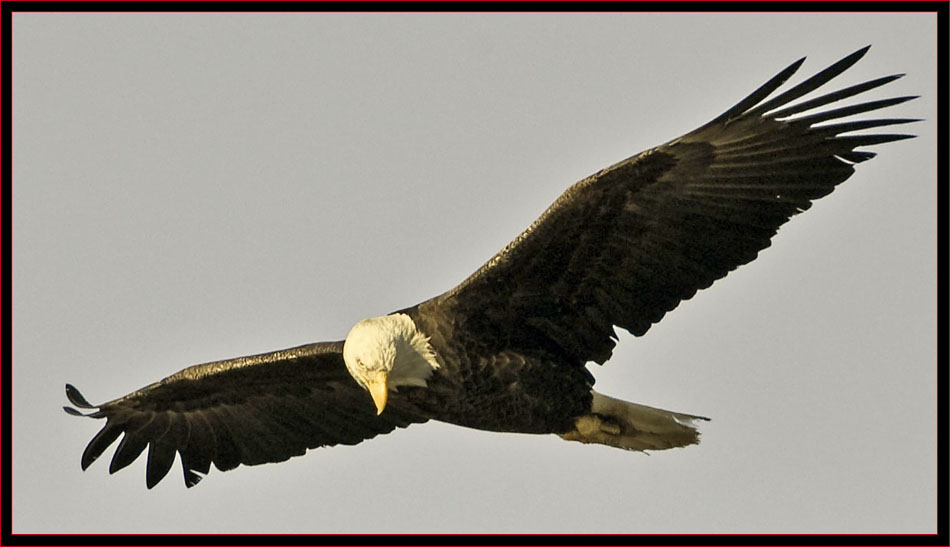
|
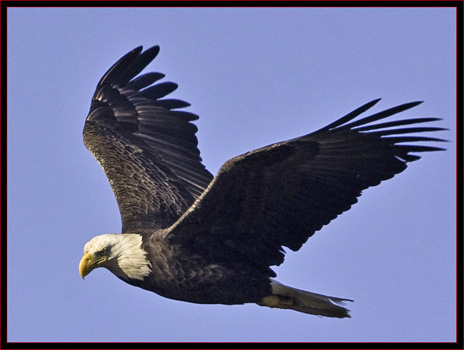
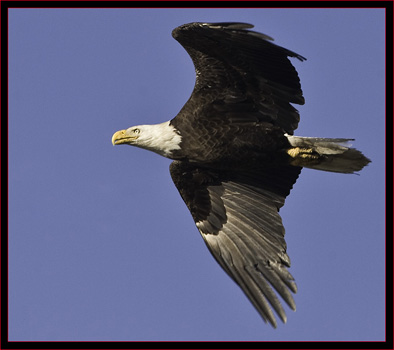
|
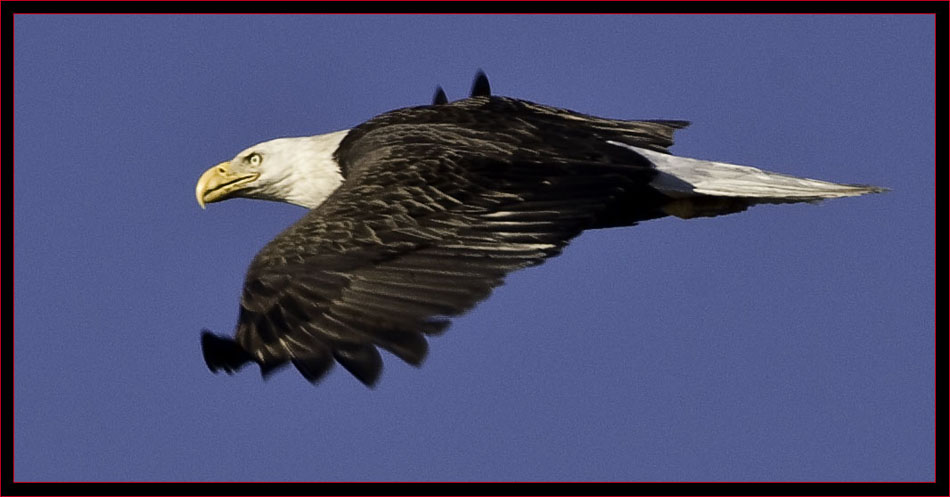
|
|
The images above represent the eagle's approach. The shot at right, taken with my 40d handheld camera was one of several after the strike. You can see the noise in this image where it was strongly backlit.
Imaged with the Canon EOS 40D handheld, 1/2000 second, ISO 400, 400mm at f/7.
|
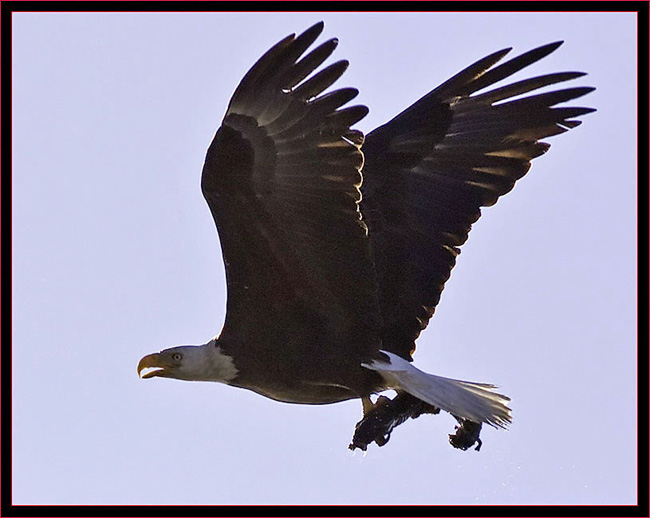
|
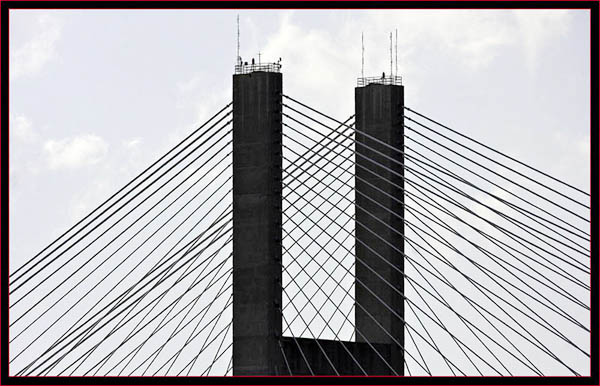
|
When I drove to SNWR from Savannah I crossed the bridge over the Savannah River on Route 17. The refuge isn’t far from here, perhaps ten miles or so from downtown Savannah. This bridge over the river is a cable-stayed structure and at times
when I passed over it with little traffic, thought about what a fine photographic opportunity shooting from the heights would present. Repair work was underway on the Eugene Talmadge Bridge and I had a plan to have my friend
Bill (Billy-Bob) Grotto drop me off as he crossed so I could take a series of shots until he could get over and across again to pick me up, then reverse this procedure so I could obtain some photographs from the other side. However, we
never actually attempted to implement this plan. Billy, being a local businessman, thought it best if we both stayed out of jail although I believe I can be persuasive enough to have gotten him to do it… In lieu of this, I decided to obtain some photographs from whatever angle I could.
Except for the full length view posted below, these images weren’t actually shot from the refuge. I included them here to go along with the distant shot with the City of Savannah in the background which was. A bit of research indicated some facts about this bridge. Eugene Talmadge was the Governor of Georgia in the 1930’s and 40’s. This four-lane span crosses the Savannah River between the City of Savannah and Hutchinson Island. The bridge replaced a smaller two-lane cantilever structure of the same name. Construction commenced in 1988 and the new bridge opened in 1991. It stands 185 feet above high tide and has a horozontal clearance of 1,023 feet, high enough to allow river traffic to pass below. The original bridge had pier supports actually in the river which experienced several ship collisions. Now two large supports for the cable-stayed bridge are located on land. |
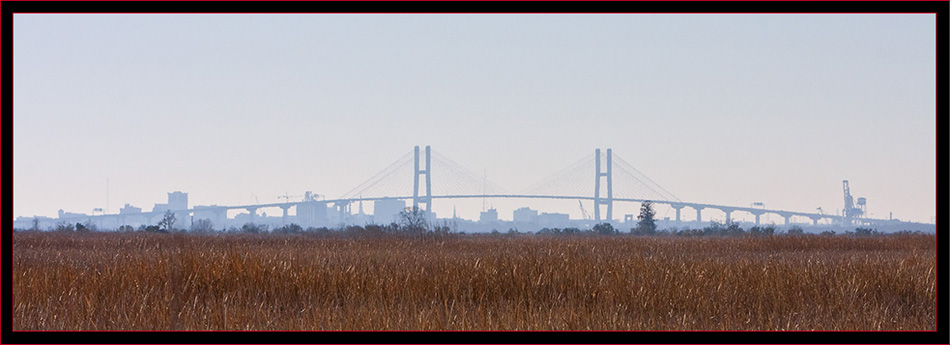
|
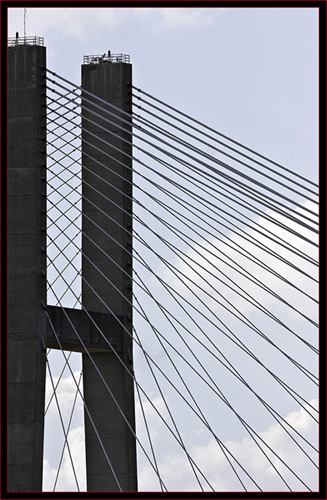
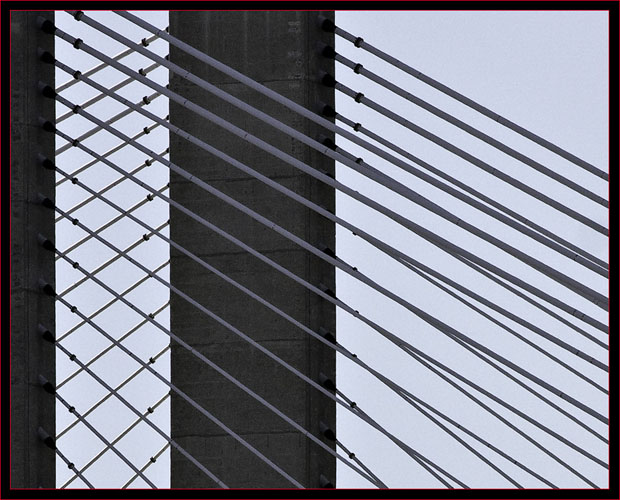
|
|
I returned to the refuge on a Saturday morning when the next group of photographs was obtained. Once I entered the wildlife drive I hadn’t gone far when I viewed vehicles parked near the water and a sizeable group
of people checking the area. As I pulled up I recognized a fellow I’d been on walks with before, Fitz Clarke. I got out and talked with Fitz when I realized this was an Audubon outing. A minute later
Diana Churchill came over and said hello and I knew there was some serious birding going on...
Diana writes the “Birder’s Eye View” column for the Savannah Morning News and is an expert birder. It was nice to see Fitz and Diana and a pleasant surprise.
Fitz was accompanied by his friend Doug Herrick, both these guys are avid photographers. They’d been researching and gearing up with some new camera equipment and we hit it off instantly while discussing all this. Afterwards we drove near my apartment location and had lunch as we talked about photographic topics. I remained interested in continuing our visit and invited them over to review some computer enhancement techniques and to evaluate some of my recent images. Both live on Skidaway Island and I indicated that soon enough I’d be staying over there as well once we vacated our present lodgings. We were to get together along with another fellow from Skidaway, Art Greene, and do some photography around their home area before I left to travel north and we remain in contact still. Common Yellowthroat imaged with the Canon EOS 40D handheld, 1/640 second, ISO 400, 400mm at f/8.
|
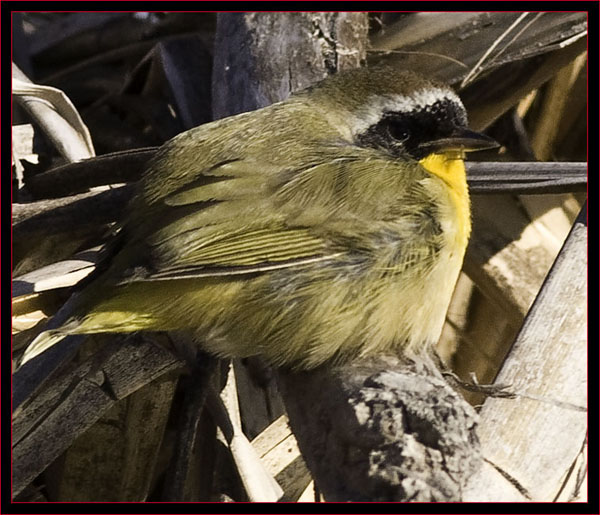
|
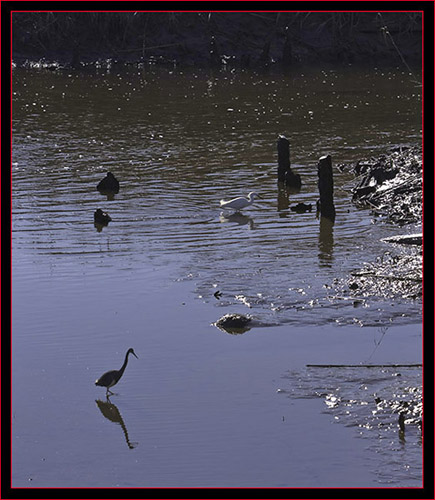
|
One thought I had while going through my image archive from this trip was that I rarely took the long glass off my cameras so had few landscape images. I determined to make an effort in the following days to rectify this oversight.
I’d been corresponding with an arborist residing in Massachusetts recently and Marc Depoto had me thinking more about trees – there were some great examples of these in the area – so I was on the lookout for some opportunities in this regard.
A typical morning view in the refuge… |

|
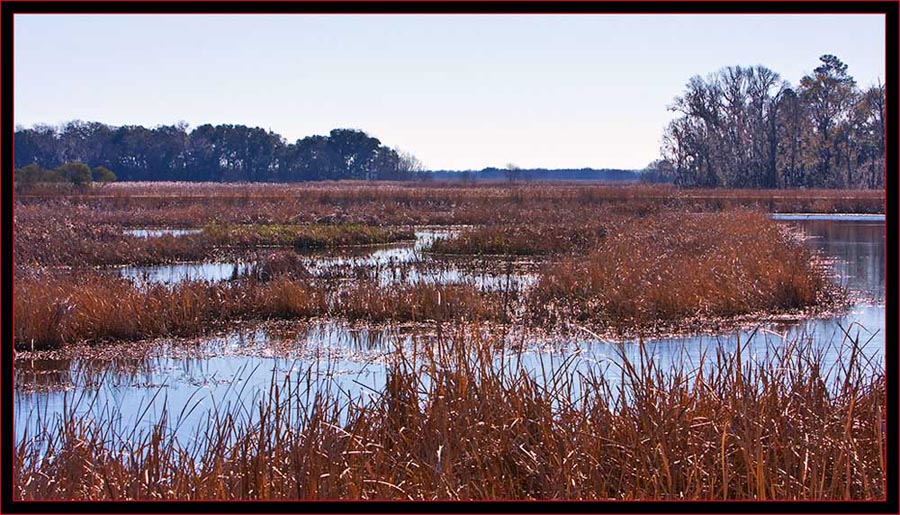
|
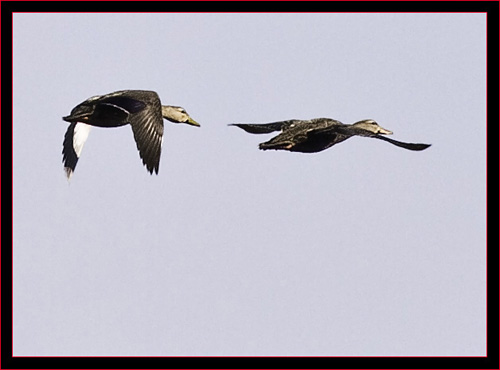
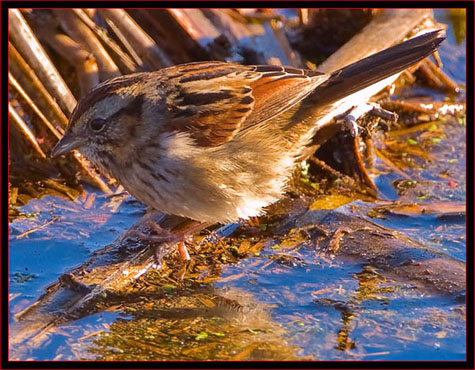
|


|
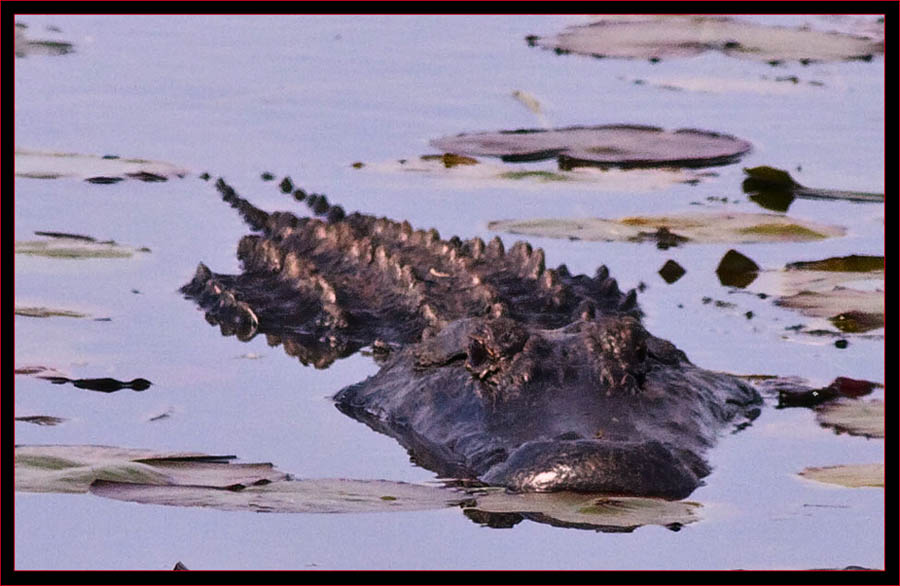
|
|
A few days later I made another afternoon trip through the refuge before returning to Pooler. This trip was fairly quick as I drove around to see what may be going on with the critters. Quite a few gators were out and most of
the photographs from this time were of these reptiles out and about.
Belted Kingfisher imaged with the Canon EOS 40D handheld, 1/3200 second, ISO 500, 400mm at f/8.
|
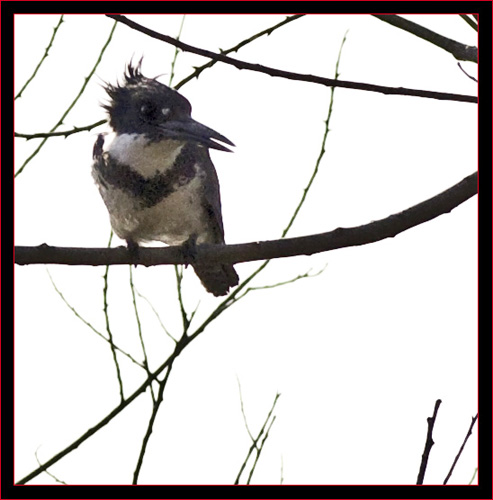
|

|

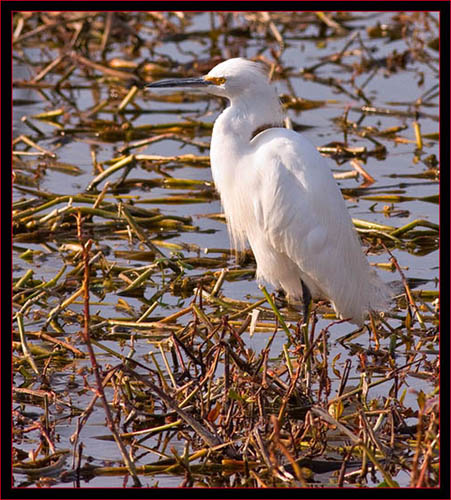
|

|

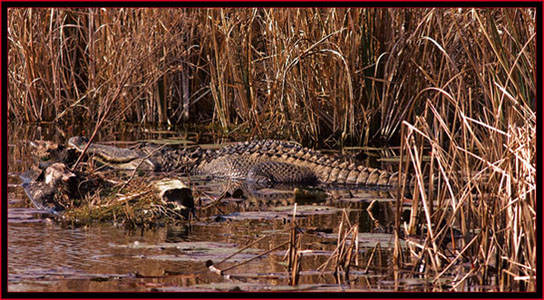
|
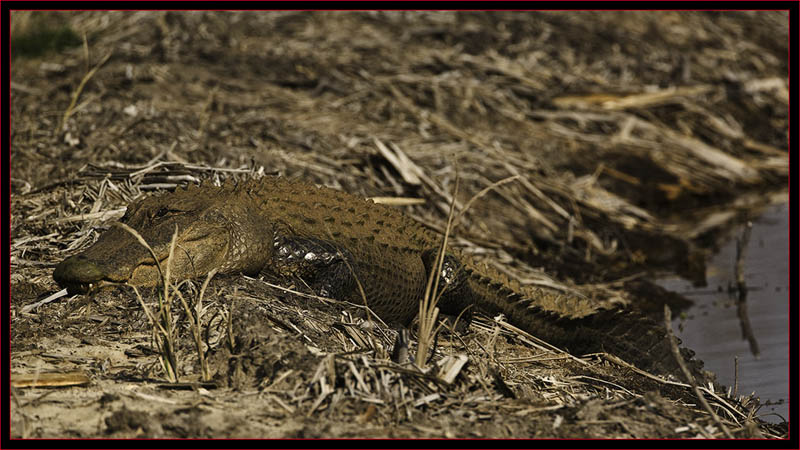
|
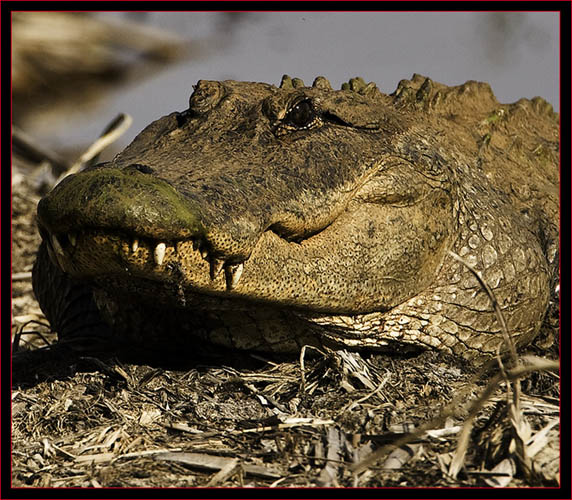
|
The image at left is a close up of the full view image above from a different angle and one my favorite gator shots. I’ll print this and have it mounted. Again this is a case where the web reduction probably doesn’t do justice to the overall image so use your imagination and picture this
photograph as a 16 X 16 inch (or larger) high resolution print… I took my time and obtained a series of close up shots on this alligator. When I say close up, it was still with a long lens tripod mounted and set up low to the ground,
so it’s not like one has to get really close to the subject. I was perhaps twelve to fifteen feet away.
imaged with the Canon EOS 5D on tripod, 1/640 second, ISO 400, 700mm at f/8. |
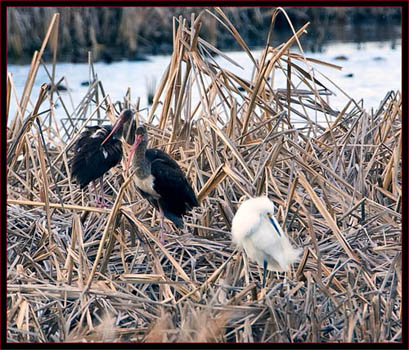
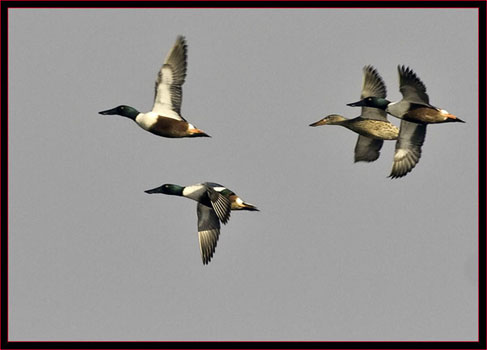
|
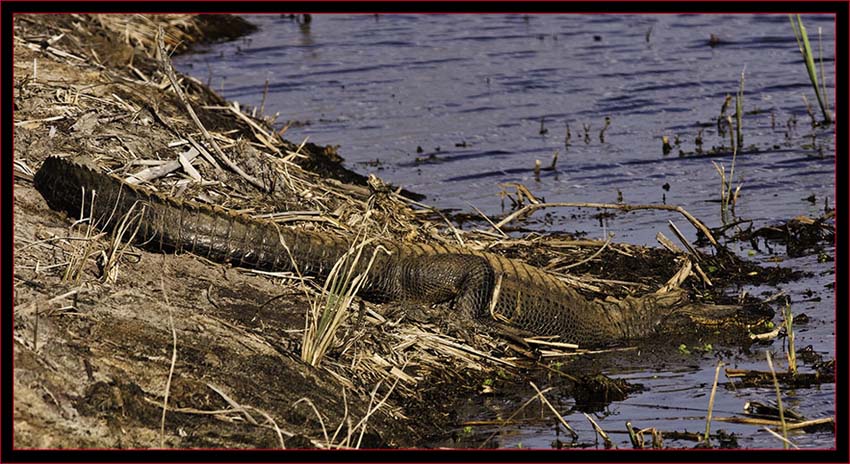
|
|
I thought the photograph at right was a bit unusual. As I was nearing the end of wildlife drive I viewed a car pulled over watching this scene and stopped to check it out. The Great Blue Heron was only a few feet away from the
gator and neither appeared to express much interest in the other. I pulled my tripod out and took several shots in an attempt to get the depth of field correct to get both subjects somewhat in focus.
This was my pick of the various exposures.
Gator & Heron imaged with the Canon EOS 5D on tripod, 1/100 second, ISO 400, 700mm at f/8.
|
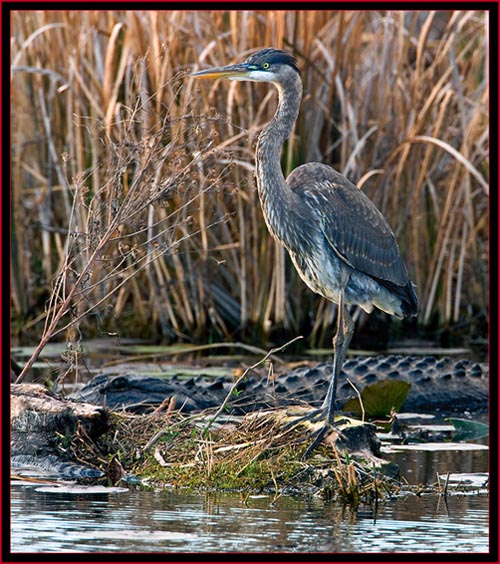
|
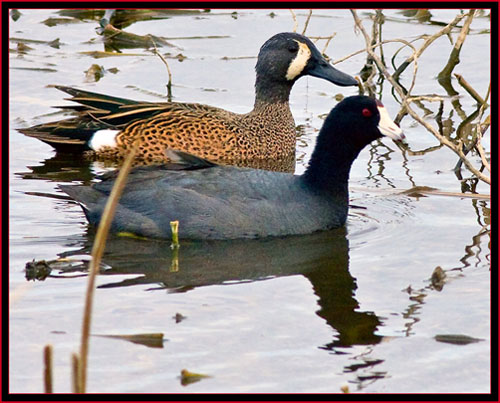
|
The next trip along the wildlife drive was on a Thursday afternoon fairly close to sunset. The forecast was calling for rain and it was kind of an interesting early evening. This was another quick trip through as it was getting late but proved worthwhile all the same. Find below several shots from this session including a series of sky shots with sunrays beaming down... |
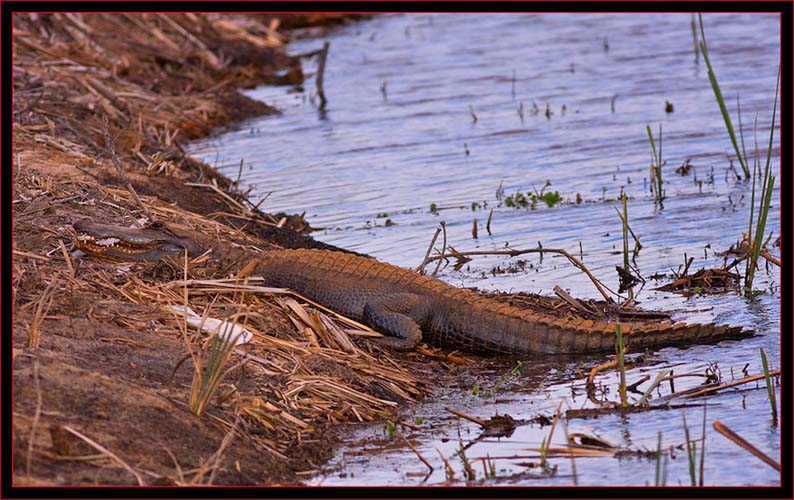
|

|
| The Photograph at right is a close up of the same animal seen in the above image. Kind of an interesting profile I thought… |

|
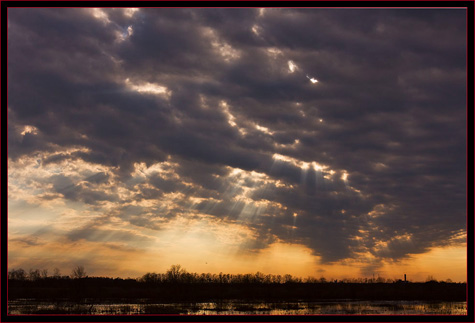

|


|
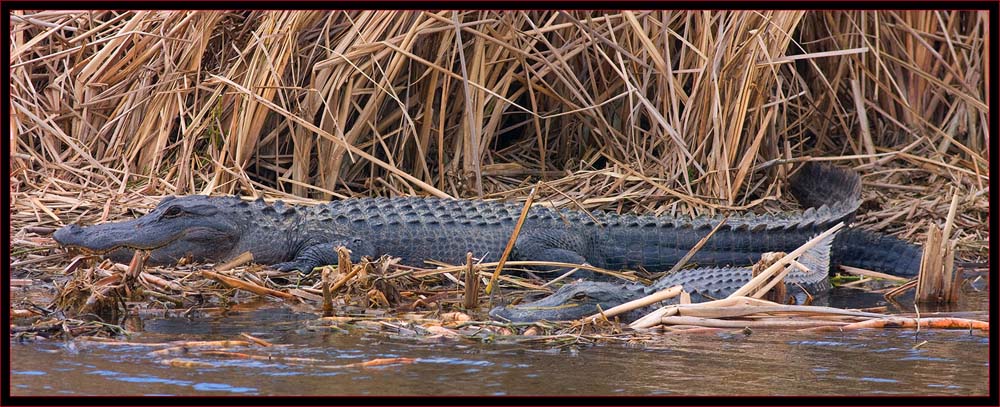
|
|
I was back the next afternoon, a Friday, and checking out the area. I’d been through here often of late and considered taking some time away or perhaps going to one of the many other areas around. But one just never knows
what can be found at any given time and it wasn’t like I had much going on outside of my work life while in Georgia so decided to travel the wildlife drive. In the end result I made the right decision as it was an
active early evening which I thoroughly enjoyed.
One of the closer photographs I obtained of a Blue-winged Teal. Canon EOS 40D handheld, 1/1250 second, ISO 400, 400mm at f/8.
|
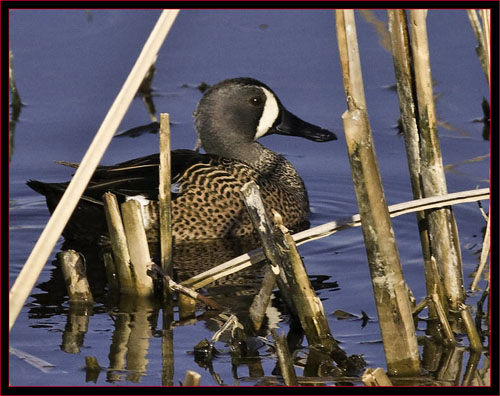
|
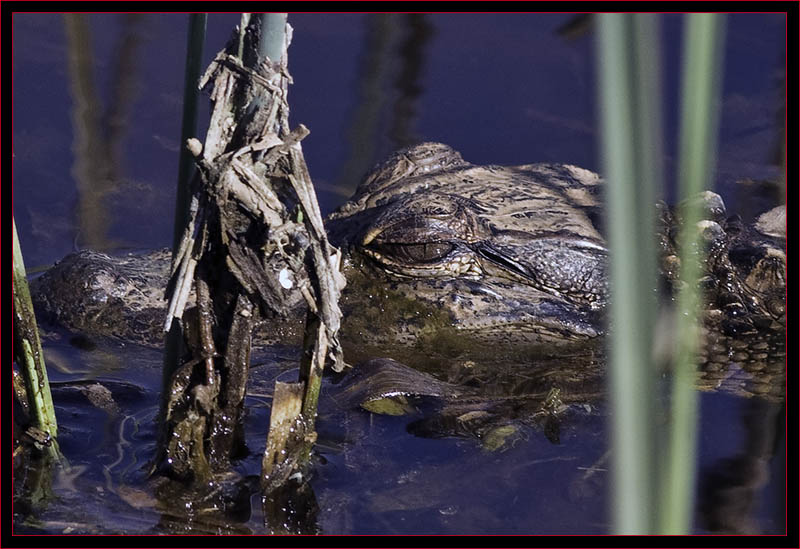
|

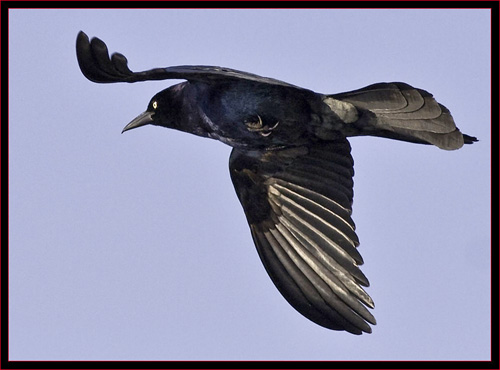
|
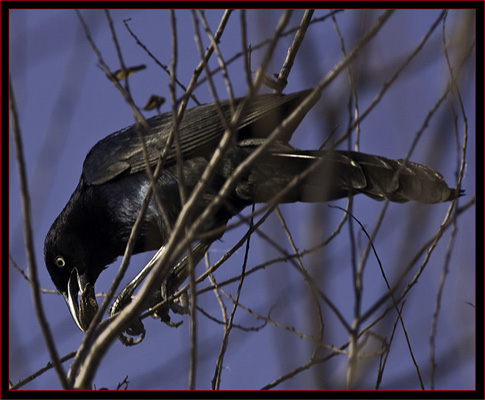
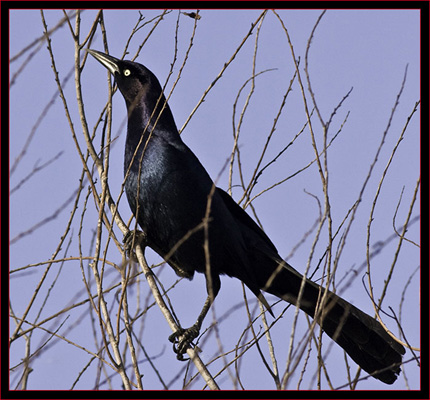
|

|
You may have read about or viewed on television news about the terrible explosion/fire at the Port Wentworth, Georgia Imperial Sugar Company Refinery. This was a horrific event and a tragedy to the local people with at least eleven dead and twelve critically injured. It was believed the fire was fueled by airborne sugar dust but the actual cause of the ignition may never be identified due to the catastrophic nature of the event. The photograph at left is a view of the refinery the day after the explosion and clearly indicates the intensity of the fire. May God bless and keep those workers and families impacted by this incident. |
|
Looking around at one of my favorite spots – the place of the eagle strike, I noticed a group of Glossy Ibis foraging. This was really neat and the first time I’d viewed these birds in the refuge this trip.
There appeared to be a sizeable flock and they were together in the distant reeds seeking sustenance. I stayed here for awhile and was rewarded for doing so by some flight shots as the birds moved around the area.
Glossy Ibis in flight. Imaged with a Canon EOS 40D handheld, 1/1200 second, ISO 400, 400mm at f/9.
|

|

|
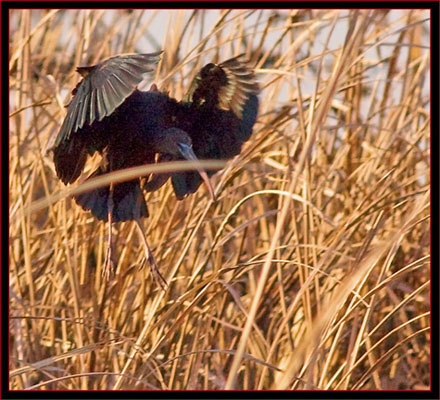

|
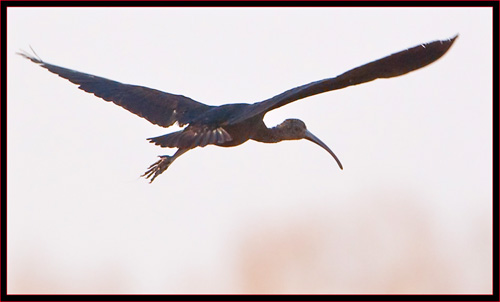
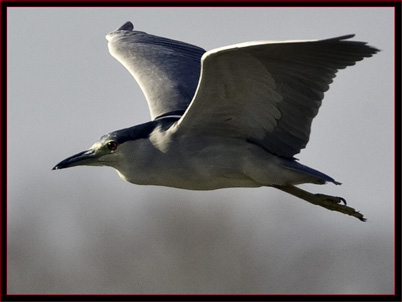
|
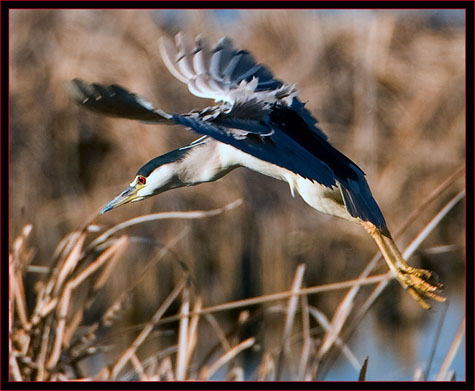
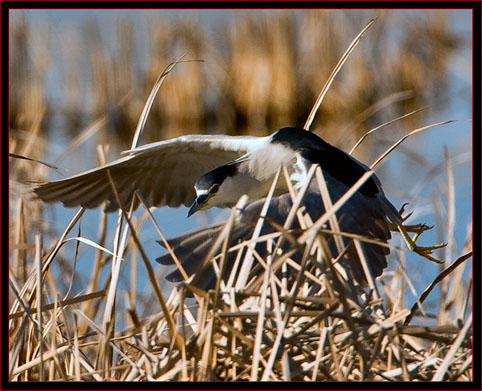
|
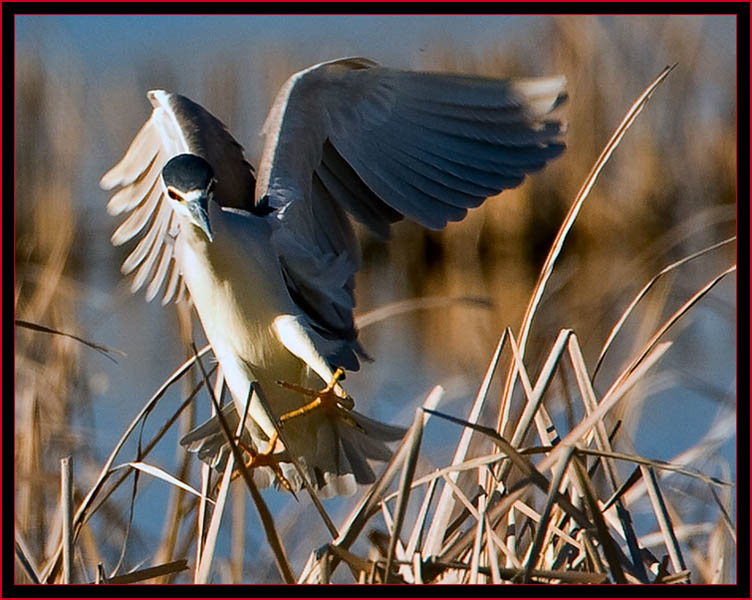
|
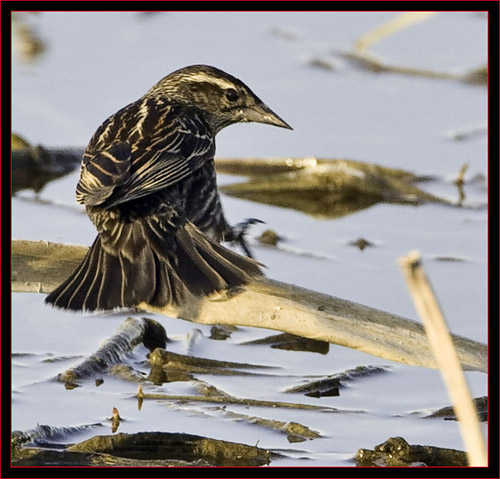
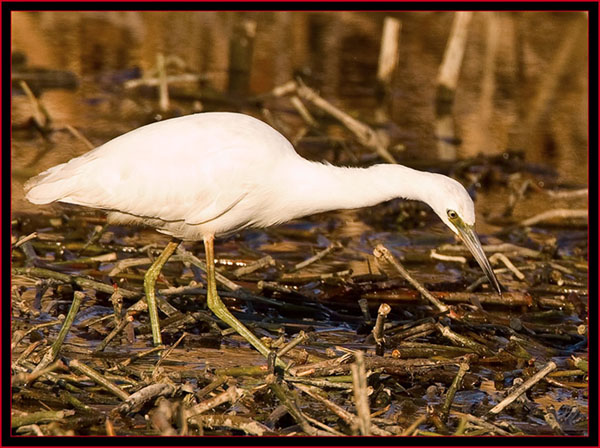
|
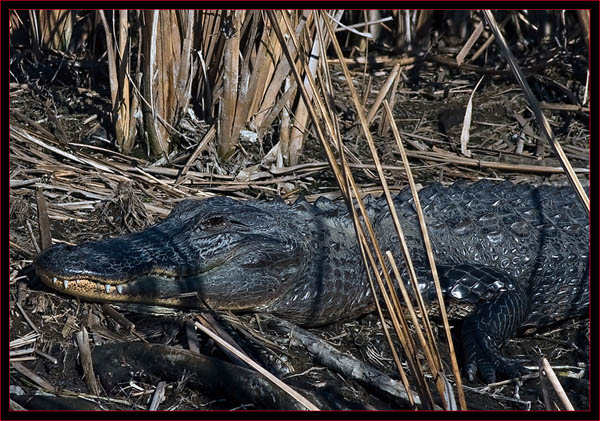
|
I’m closing this session with a few more gator shots from the afternoon. The image at left was taken with my handheld system. The gators below are a composite of four Raw files stitched into a composite in Photoshop CS3. |
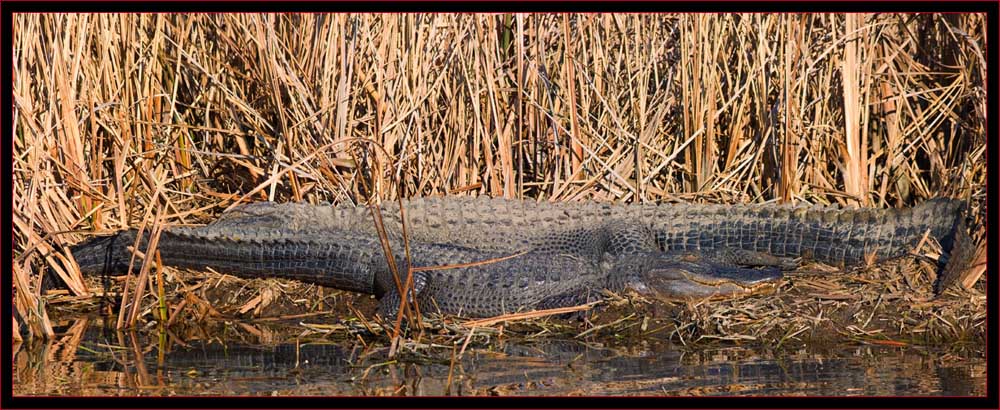
|
|
Remember earlier that I mentioned planning to do some scenic shots? Well, this session had a lot of that going on and the images in this section were selected out of many shots I took.
The Cyprus grove is in the refuge but not really close to the wildlife drive entrance. I’d driven by this area of swamp many times before stopping this day on the way to Pooler. And yes, I did get wet collecting these shots. Although not far off Route 17, one has to get through all the vegetation between the road and swamp in order to get a clear field of view which puts you pretty much in the water. I had a pair of rubber boots purchased from the local Bass Pro Shop with me so this wasn’t problematic. Most of these landscapes were taken with my Canon EF 16~35 f/2.8L lens. Another point of interest this day was we were packing up the apartment. As soon as this was completed my associates hooked up the trailer and headed north for Maine. Our time in Georgia was just about over and that left me a bit of an orphan for the remaining time I needed to be in the south. |

|
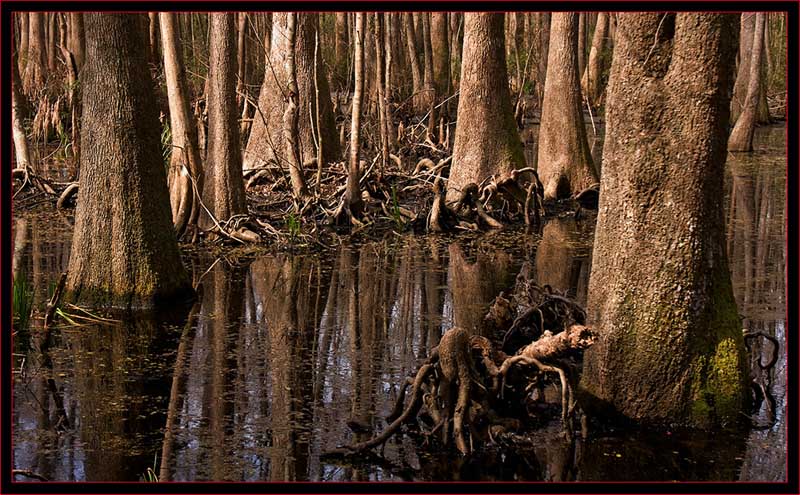
|
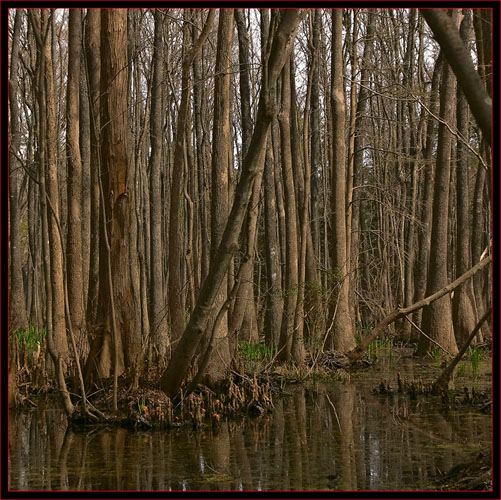

|
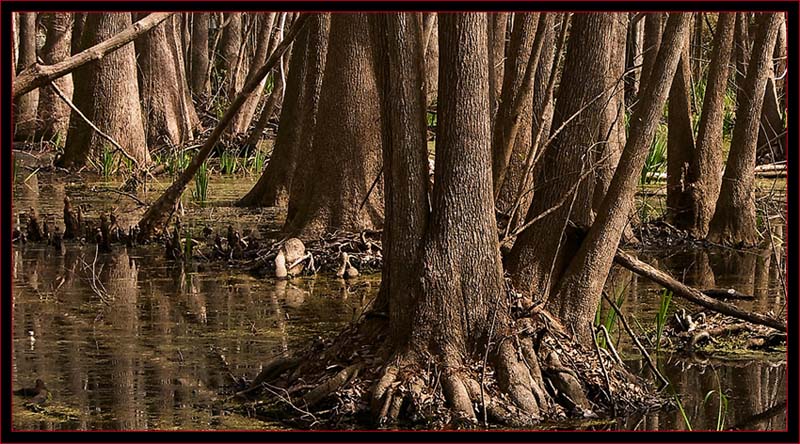
|

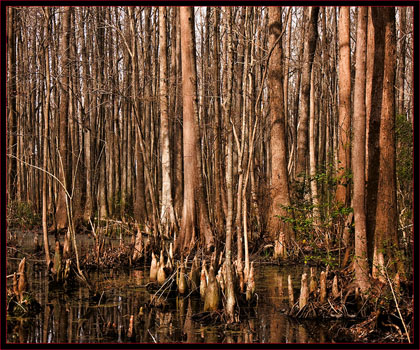
|

|
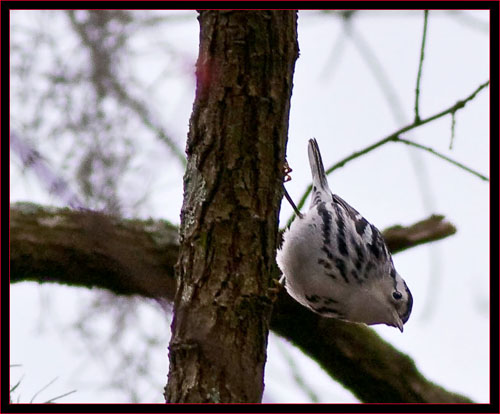
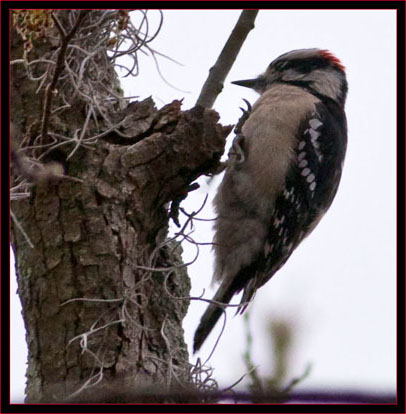
|
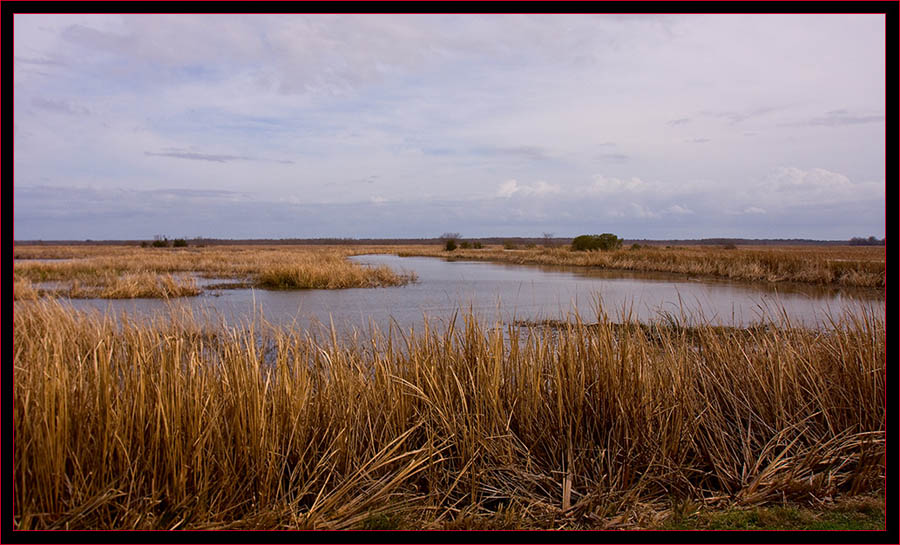
|
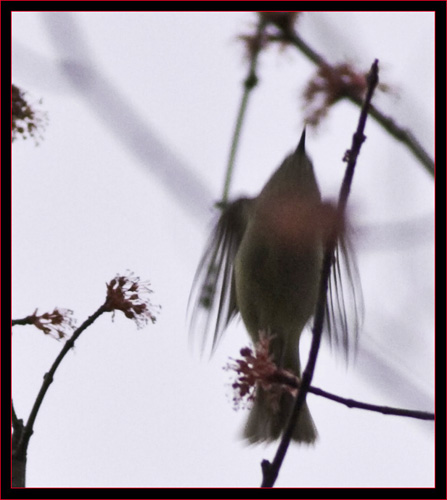
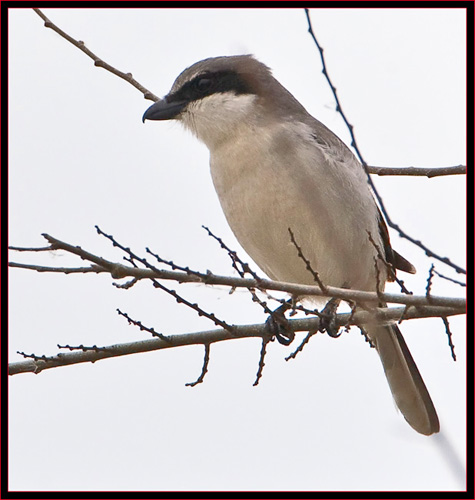
|
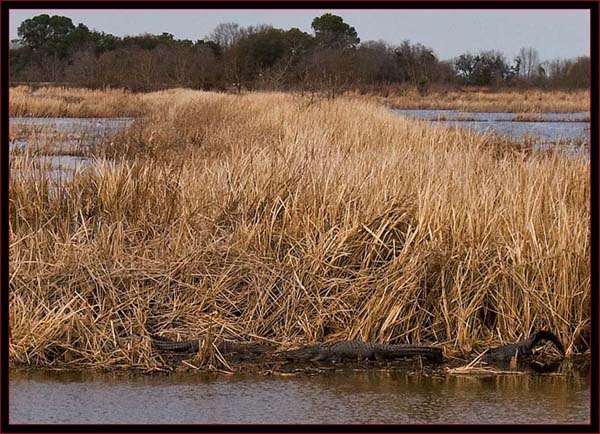
|
At left: Three gators resting alongside the water in the refuge. My friend Doug Herrick provided some advice if/when the time came I was being chased by one of these irate gators while
attempting to obtain a photograph: They can sprint impressively fast for the first ten or fifteen feet and it’s unlikely you’ll outrun one, so be sure to turn left or right as soon
as you can because they can’t turn and sprint in a straight line... Gee, thanks Doug, I’ll certainly heed your advice
and take it to heart but let’s hope I never need to...
Below: In closing this session I'm posting a three image template of one of my favorite spots in SNWR. This little pond is quiet in the winter but a favorite spot for many young gators, turtles, snakes and birds at other times of the year. |
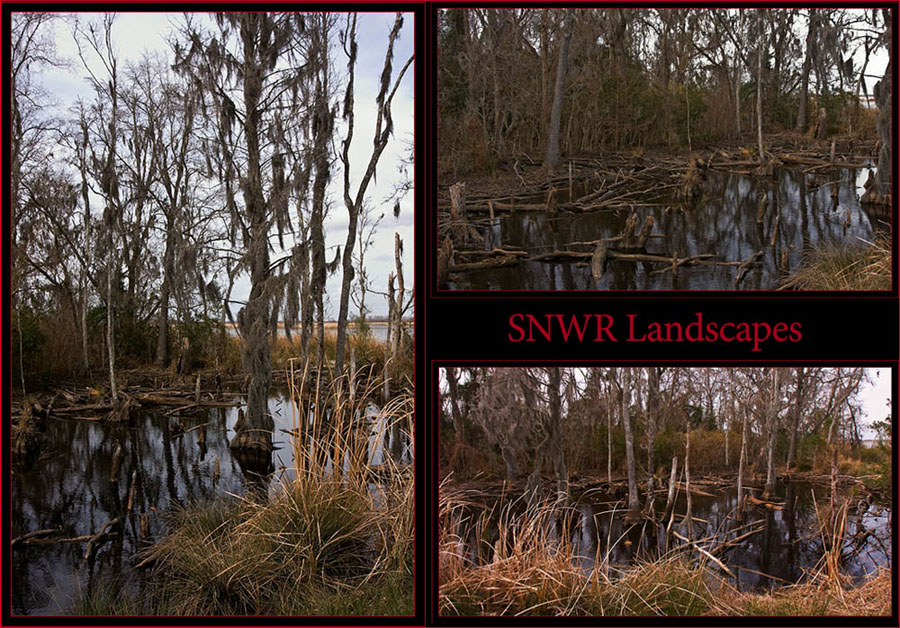
|
|
I had little to do work wise for the balance of the week. There’s always something to do of course, but the project was fairly well shut down while inspections for the various disciplines took place. I remained in the area
because the following Monday and Tuesday I had meetings in Jacksonville, Florida and would be heading further south before making the drive to Maine. I spent a few evenings at a hotel in Port Wentworth so had a short
drive to the refuge. I figured I may as well take advantage of this proximity with the time at hand so prepared the cameras and in the morning drove to the refuge.
I viewed only one pair of Killdeer in the refuge this trip and this is one of them. Imaged with a Canon EOS 40D handheld, 1/400 second, ISO 400, 400mm at f/8.
|
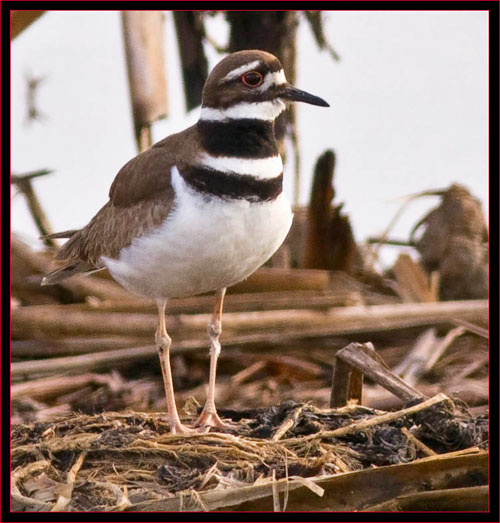
|

|

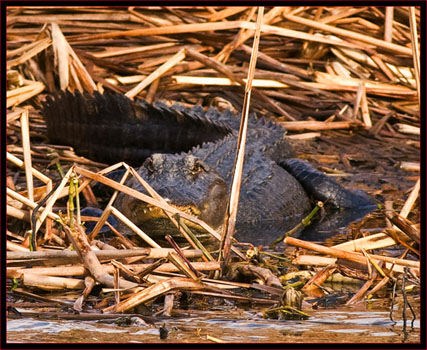
|

|
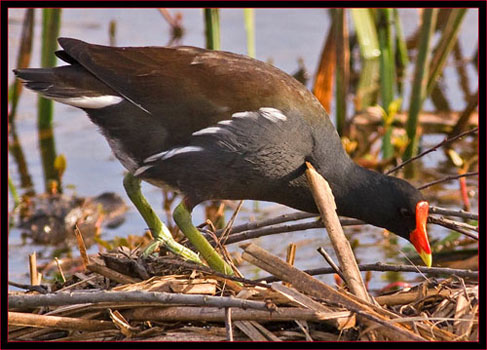
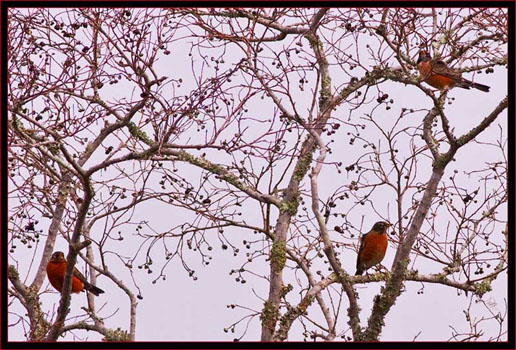
|
Valentine’s Day – And The Last Transit...
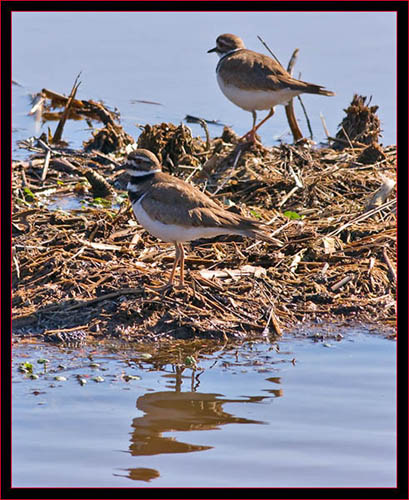
|
This was to be the last evening I stayed out by the Savannah National Wildlife Refuge. I’d still be around Savannah for a few days but planned to stay on Skidaway Island with my friend Bill and his family.
This also provided an opportunity for me to spend some time and take the field with my new friends Fitz, Doug and Art, all avid photographers, who live on the island.
It was later in the morning when I entered the Laurel Hill Wildlife Drive. I planned to be on Skidaway Island later in the day and knew I’d be out with my cameras for a second session, so didn’t spend a great deal of time in the refuge. Killdeer pair imaged with a Canon EOS 40D handheld, 1/250 second, ISO 400, 400mm at f/10. |
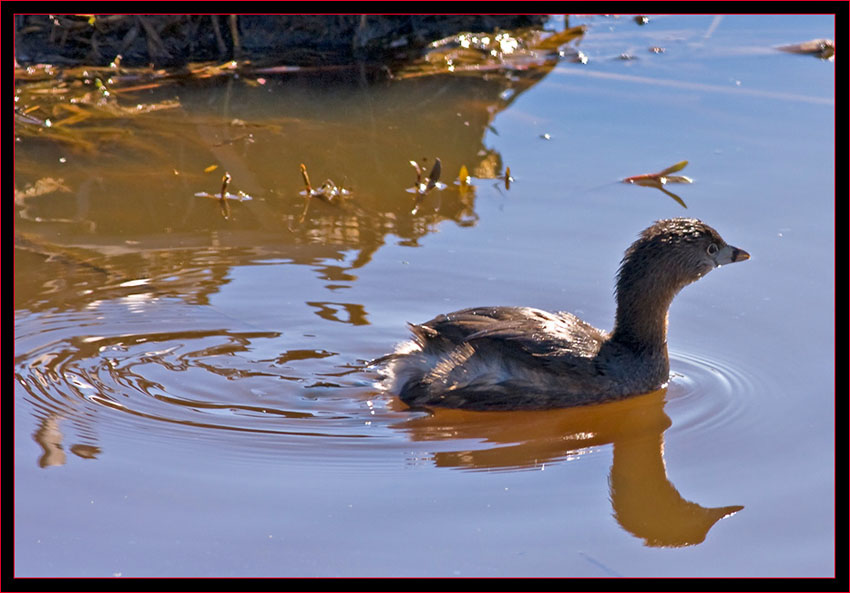
|
|
I took a leisurely drive checking the areas I’d become so familiar with hoping I’d come by at the right moment to spot something unusual or new to my experience. Everyday in the refuge is different to some degree and
it’s good to vary the times you check the areas for wildlife. Morning is always the best for birding and it's probably much the same for everythng else...
American Alligator catching some morning Sun. Imaged with a Canon EOS 40D handheld, 1/400 second, ISO 400, 400mm at f/9.
|
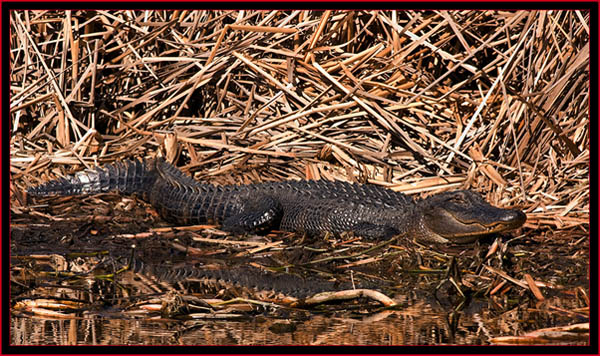
|

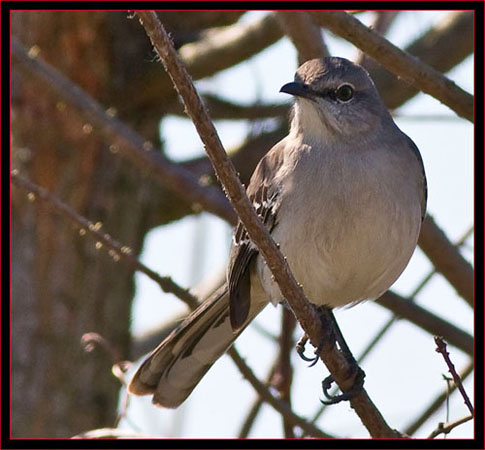
|

|
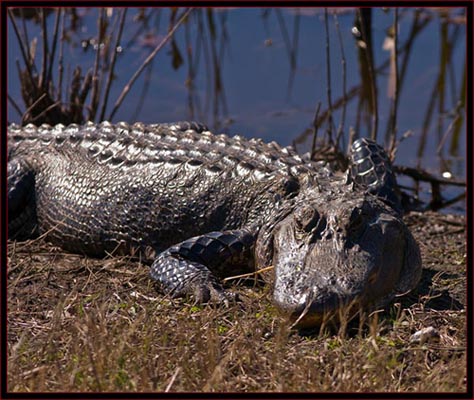
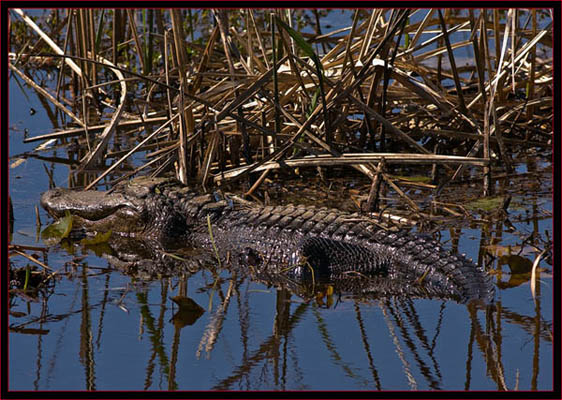
|

|
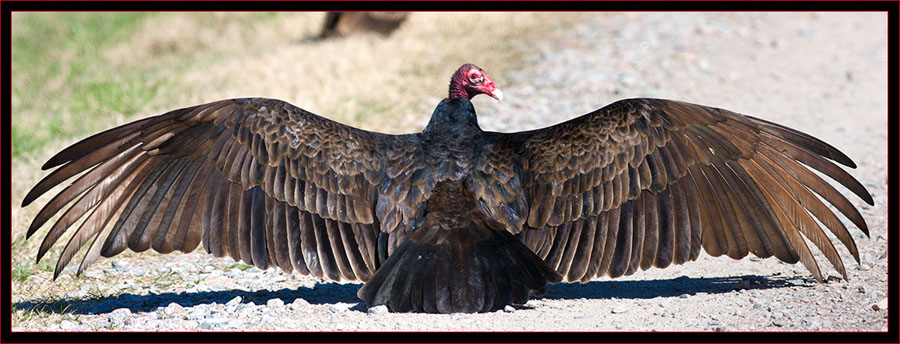
|

|
In closing I’d like to dedicate this photojournal to all my new friends and acquaintances met along the paths of the Savannah National Wildlife Refuge. As in most things in life ‘you get out of it what you put into it’...
Well, I for one got much out of my time in the refuge – it is a unique and interesting environment and I enjoyed the varied nuances this special place has to offer. Sorry about being gone for so long Linda –
you were missed on this trip. |
March 2008